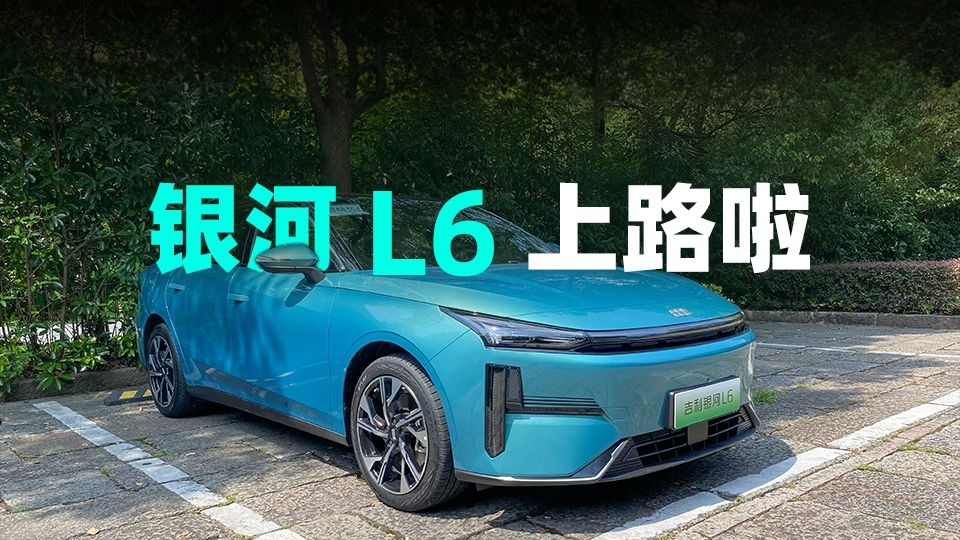Just two months after initiating deliveries, the “GEELY Galaxy L7” reached a monthly sale of over ten thousand, testing to its wide acceptance by customers. In no time, the second car in the Galaxy series – “Galaxy L6” – also officially made its appearance.
The L7, which I already got to test drive earlier, left a good impression with its sporty chassis tuning. Now having an opportunity to take the L6 on a deep test drive without pre-defined routes within the city of Hangzhou, I am indeed eager to get behind the wheel.
Driving experience of a front-wheel-drive car under 200,000 – How does it feel?
For those who are unfamiliar with the car, let’s first look at the power-related hardware parameters of the “GEELY Galaxy L6”.
- Equipped with the new generation “Leishen 8848” hybrid system, composed of a 1.5T B-Plus engine and P1, P2 dual motors. The engine has a maximum power of 120 kW, maximum torque of 255 N.m, with a thermal efficiency reaching 44.26%.
- The P1 has a maximum power of 60 kW and the P2 has a maximum power of 107 kW. In daily driving, the P2 motor drives the car, and when the accelerator is deeply pressed, the P1 motor can momentarily participate in acceleration.
- The overall maximum power of the car is 287 kW, the maximum torque is 535 N.m, and the 0-100km/h acceleration time is 6.5 seconds.
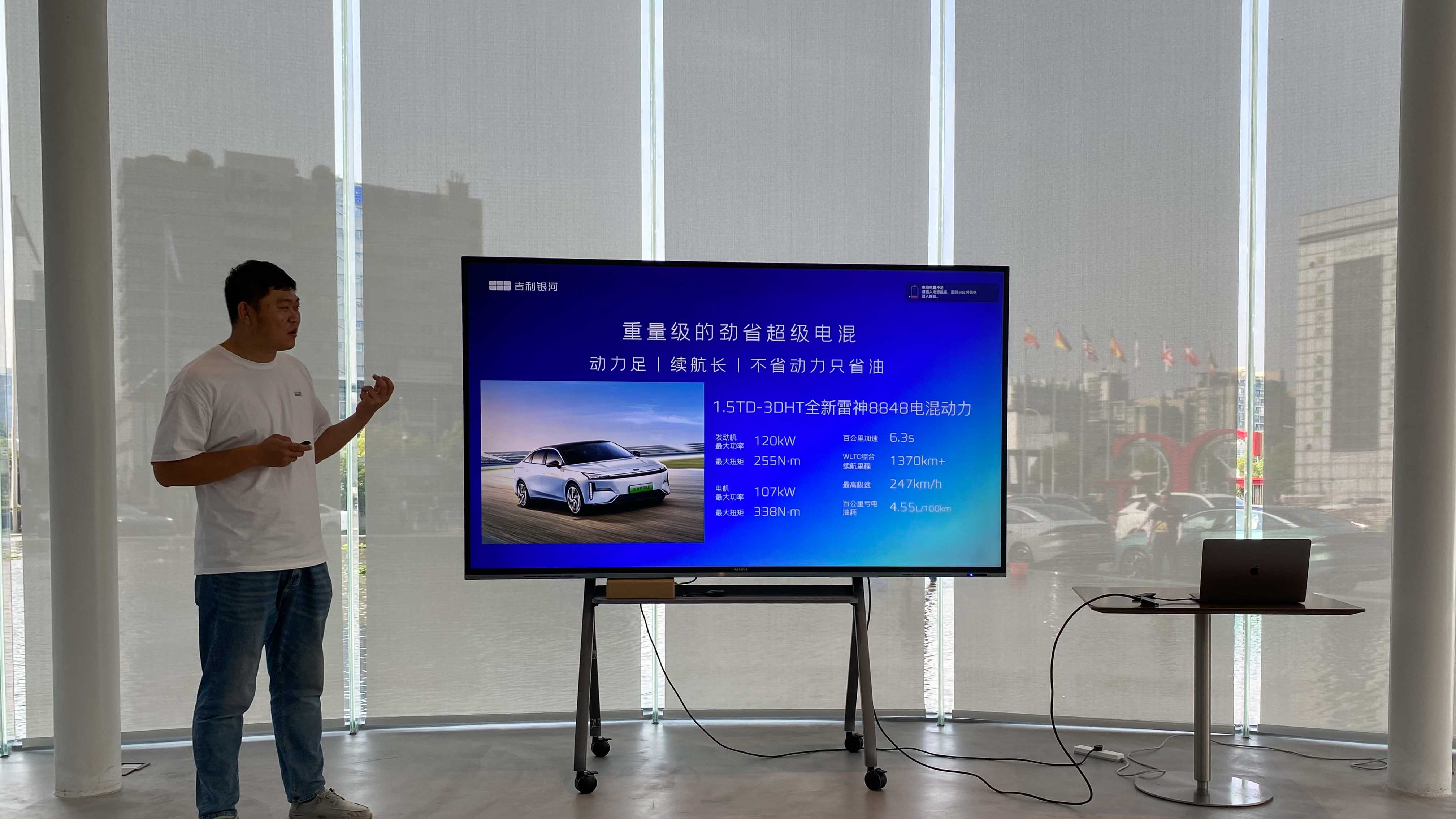
- It adopts a three-speed DHT gearbox, corresponding to three speed ranges: 0-20 km/h, 20-80 km/h, and above 80 km/h.
- The suspension adopts a front McPherson and rear multi-link design.
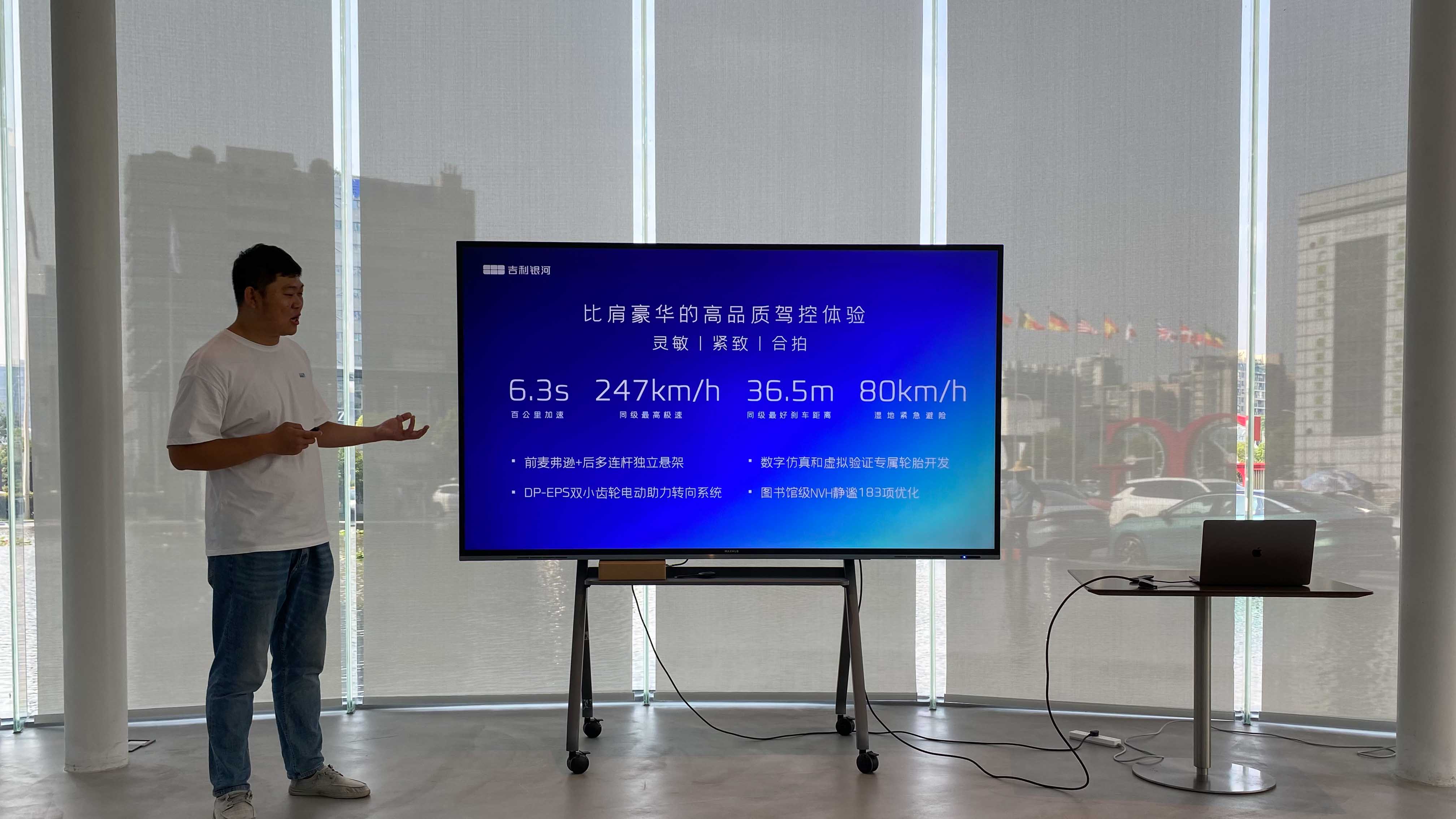
The “GEELY Galaxy L6” has four driving modes, namely Intelligent, EV, Range Extender, and Hybrid, catering to four different driving scenarios. Because the other modes were tested last time, today, I will use the Intelligent mode throughout to see how the car performs. The car started off fully charged and filled with gas.
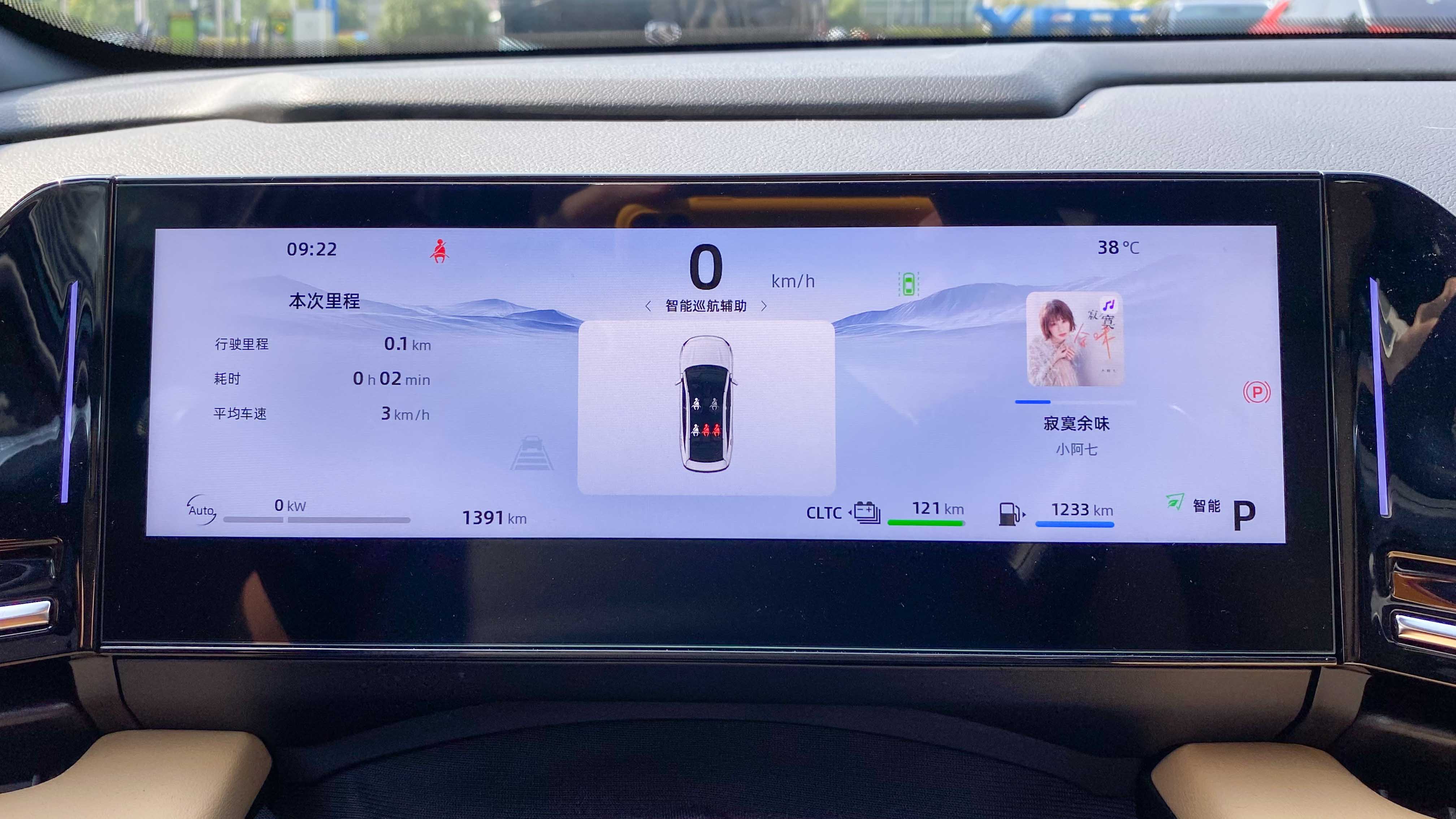
With sufficient power, under the Intelligent mode, the vehicle will prioritize driving in EV mode, the power response aligns with single-motor electric vehicles that take around 7 seconds per 100 kilometers. The engine does not intervene at this time. After driving for about 70 kilometers, as the power gradually decreases, the engine actively intervenes and works with the motor to drive the vehicle. The vehicle’s power is essentially the same as in EV mode, but when the accelerator is deeply pressed, it is unavoidable to experience a slight delay in power caused by gear shifting.
Speaking of pedal tuning, the “GEELY Galaxy L6” has quite linear accelerator and brake pedals, making it easy to handle. The accelerator builds up power as the driver gradually presses it deeper, rather than responding after a delay of about 1 second as in some car models, or the power suddenly surging when the pedal is depressed to 1/3 – 1/2.If the brake pedal feels odd, or if the braking force isn’t linear, a nodding phenomenon might occur when braking, causing discomfort to the occupants. None of these issues arise with the L6, as the brake pedal responds proportionally to the pressure applied. Mastery can be achieved within 3-5 brake lights.
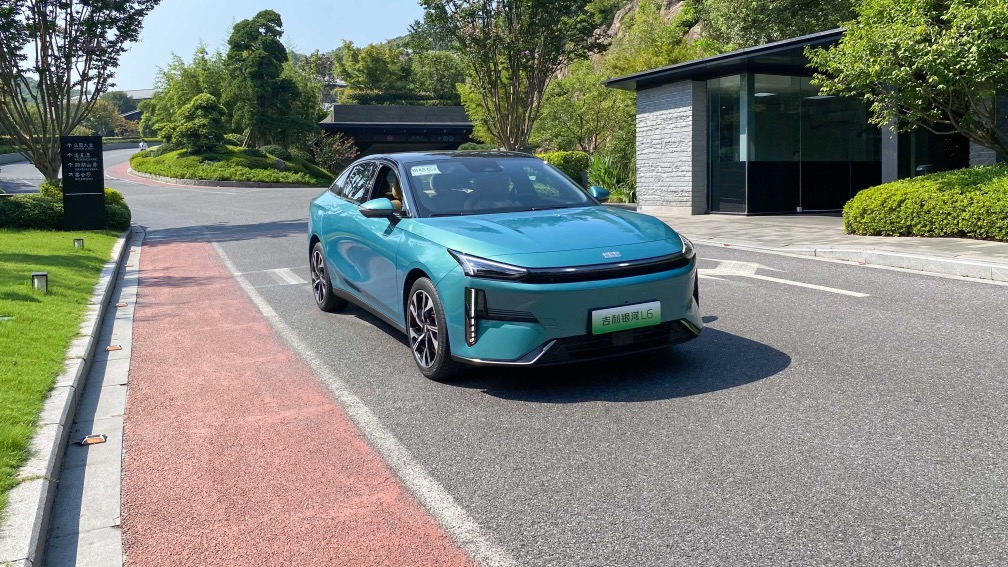
The vehicle’s kinetic energy recovery can be adjusted with 4 gears and can be completely turned off. Even at the highest gear, the recovery force isn’t overly strong, the braking force won’t be too strong once the brake pedal is fully released, offering a driving experience similar to a fuel vehicle.
Equipped with a DP-EPS assistive steering system, the vehicle offers speed dependent variable steering assistance. The precision of the steering is indeed commendable, with minimal play, having been previously tested on Jin Can Na’s track. In the vehicle’s system, you can choose to link steering assist with driving mode or set it independently to comfortable or sporty – my personal preference being the latter.
The Geely L6 continues the suspension tuning style of the L7, generally leaning towards sporty. Under normal conditions, when driving over manhole covers, and bridge seams, the ride is crisp and direct with no redundant movements. However, the roads in Hangzhou’s urban areas are generally well-maintained, so it’s not possible to see how the vehicle handles poor road conditions.
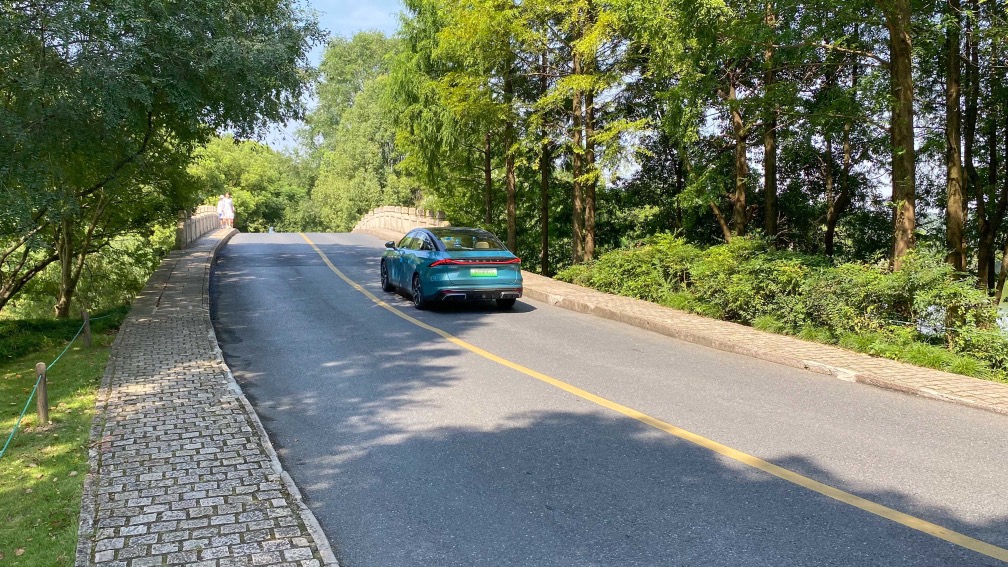
When descending from flyovers, the suspension can quickly steady the body. I didn’t experience any uncomfortable head hits when sitting in the back. However, the firm suspension can make the rear passengers slightly uncomfortable when passing over speed bumps.
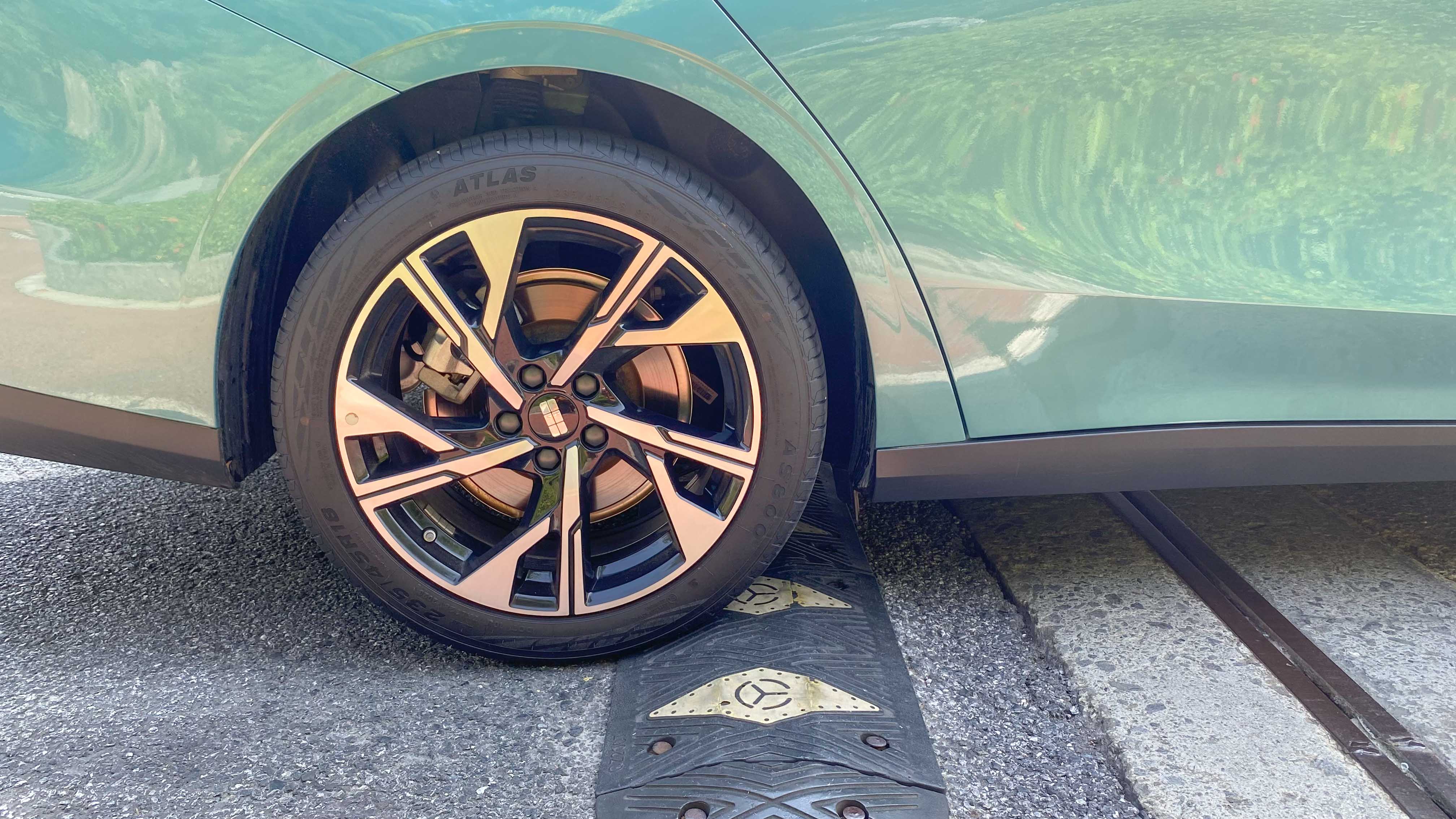
Assisted Driving: Reliable and Stable
I’ve previously test driven the Geely L7 in Xinjiang, using its assisted driving function for a 70 km drive on the highway. The vehicle’s stability left a profound impression on me. This time around, test driving the L6 within the city of Hangzhou without a specific route, I found it necessary to test the assisted driving feature.
The Geely L6’s lane-keeping function can be easily activated with the RES button on the left side of the steering wheel, while the button on the right adjusts the vehicle’s cruising distance, offering 3 adjustable gears. The same gear dynamically adjusts the following distance depending on the speed – 1st gear is adequate for urban driving. The remaining gear lever can increase or decrease the set speed by 5 km through an upward or downward flick.
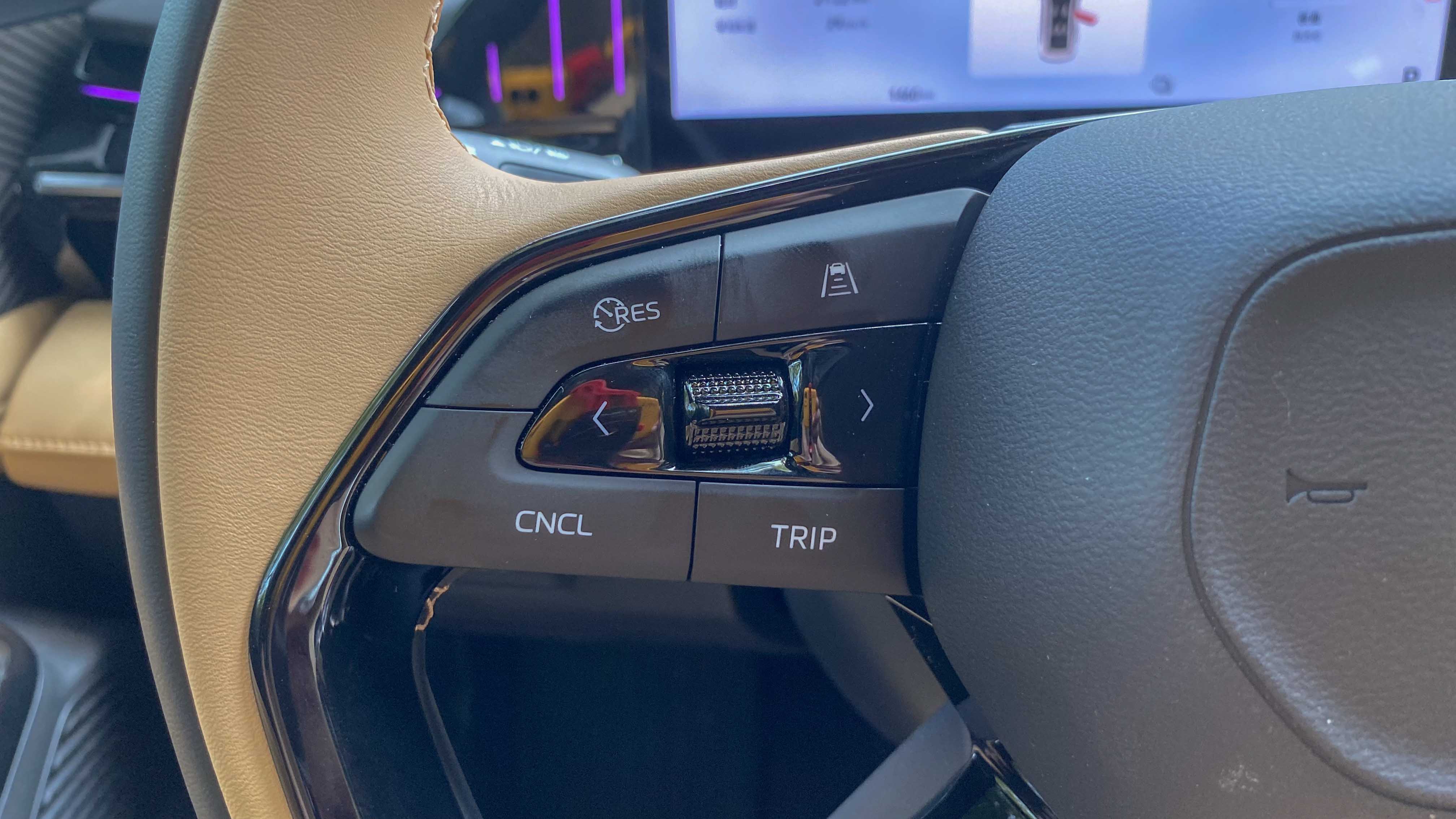
After activating the function on the overpass, the vehicle will follow the speed of the vehicle ahead or the pre-set speed on straight roads while maintaining stable lane keeping. On curves with slight curvature, the vehicle can pass through without slowing down or with a slight decrease in speed. However, on larger curves, the vehicle didn’t slow down promptly, causing a slight lane crossing. Therefore, drivers need to be attentive and intervene when necessary.
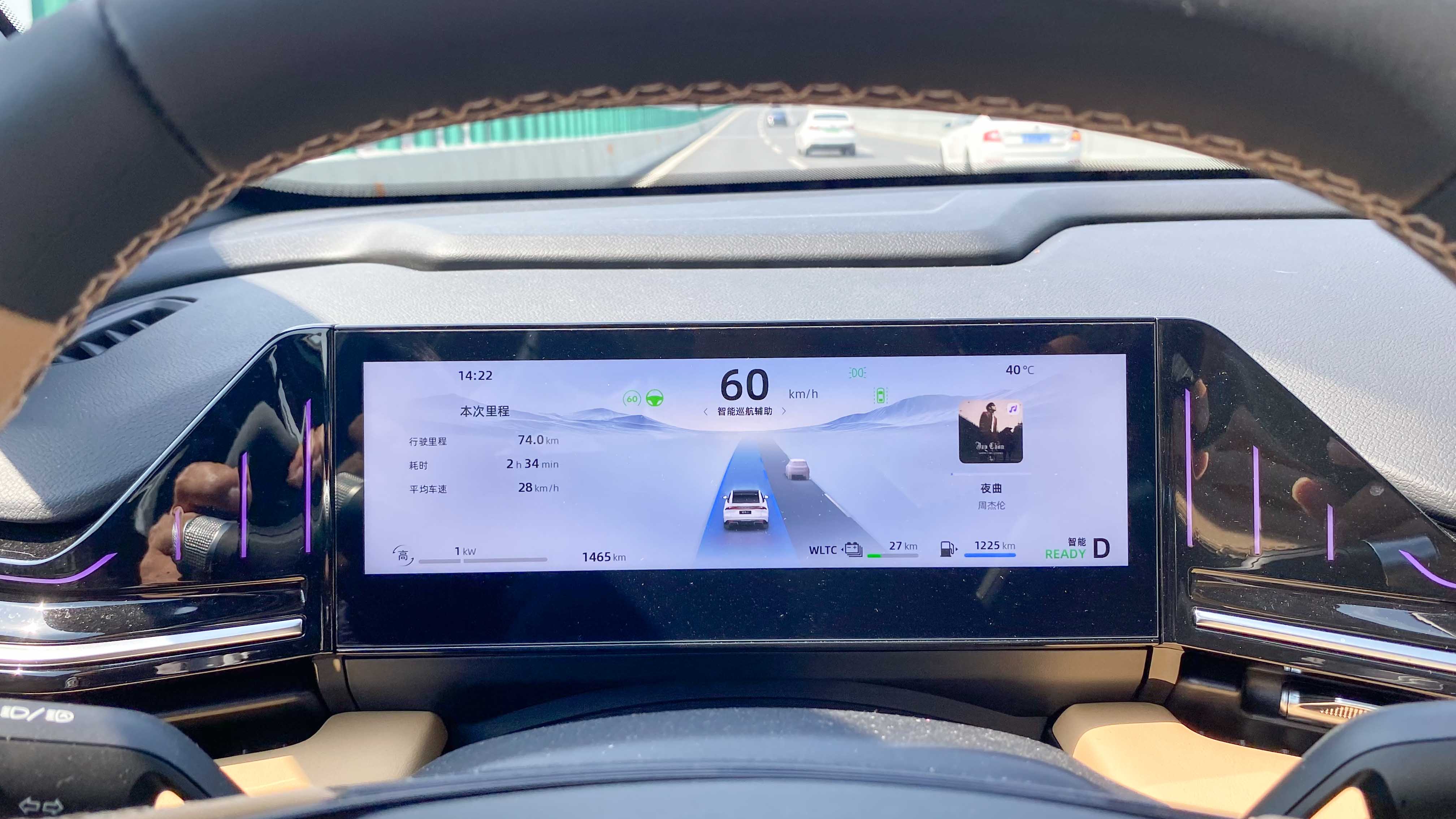
I encountered congested traffic on the overpass too. The vehicle’s brake control is well-handled when the car ahead slows down, yet it accelerates rather slowly afterward, making it an easy target for other vehicles to cut in. Additionally, in cases of close-ranged cut-ins, the vehicle’s braking can sometimes lag, hence necessitating the driver’s timely intervention.
In scenarios where a single lane splits into two, the Lane Keeping Assist system will not disengage. Instead, it will default to continue driving in the right lane.
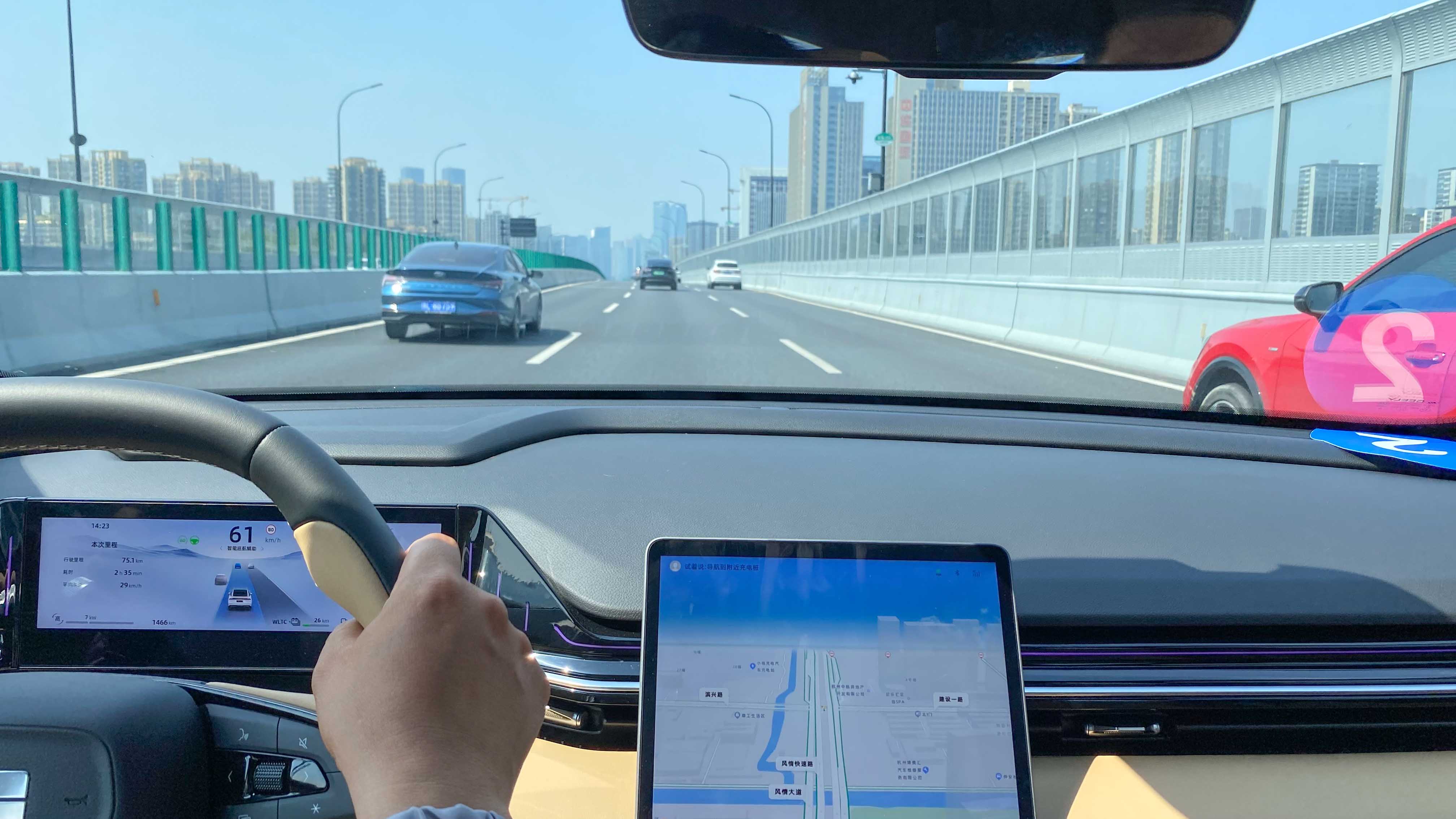
The Geely Galaxy L6 lacks lane-changing functionalities. Upon signaling, the car enters ACC mode. After manual completion of the lane change, and upon lane line detection, the vehicle will automatically revert back to lane-keeping mode. The steering wheel employs torque sensing where lightly exerting force will not call off the assisted drive. Add a little more effort, however, and the car will rapidly detect the driver’s intention to take control and hand over the steering power.
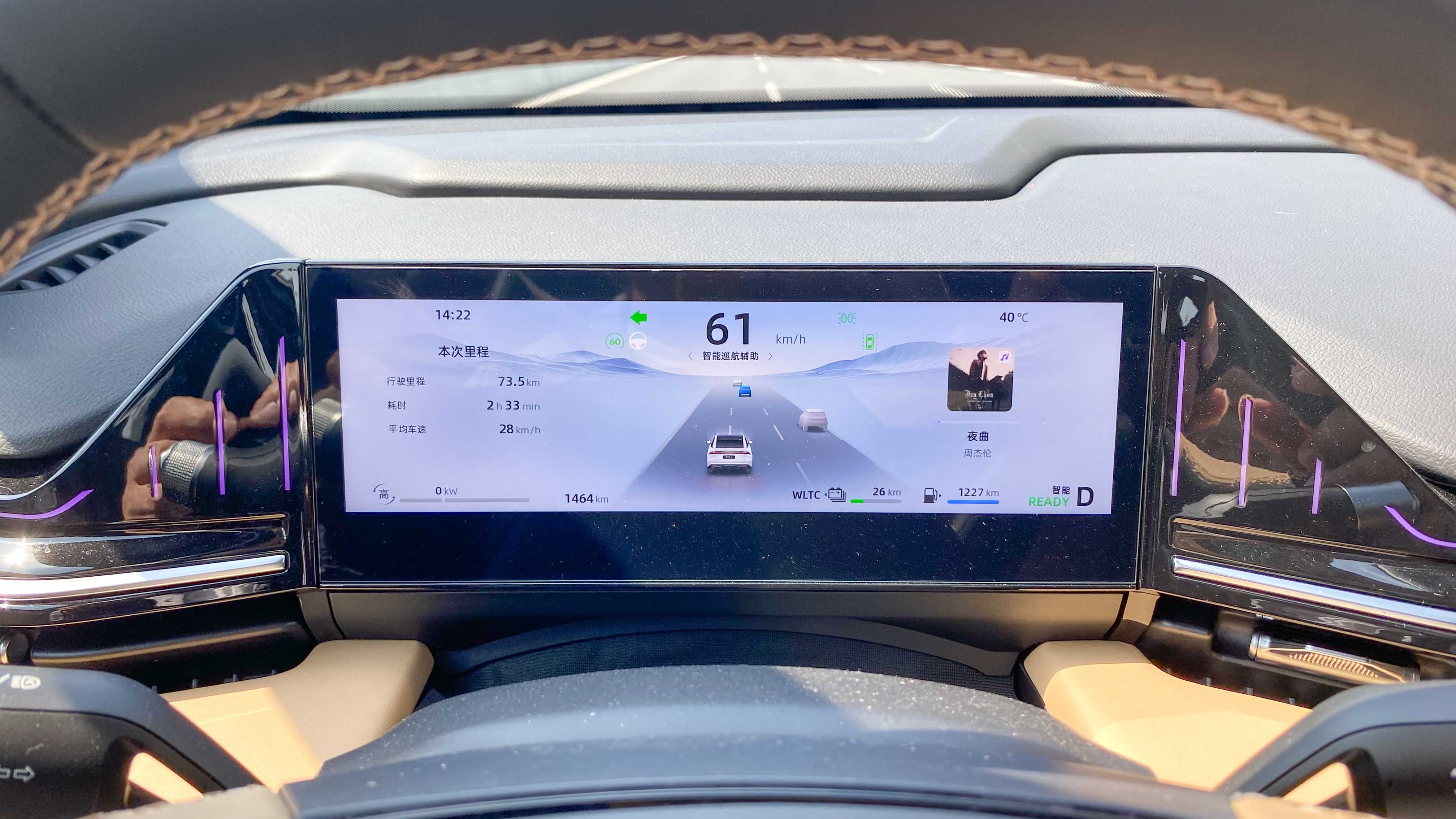
Overall, despite it not been announced what hardware has been incorporated, the assistance driving feature on the Geely Galaxy L6 has set the bar pretty high for cars below 200,000. On high-speed overpasses, you can trust its performance most of the time. Still, in rather urgent circumstances, drivers need to promptly take control.
The Static Section: An Exceptional Storage Space
Since you’ve already had ample exposure to the exterior of the Geely Galaxy L6, I won’t dwell on that. At the scene, we have purple and turquoise display vehicles. Here are some actual shots; which color do you favor?
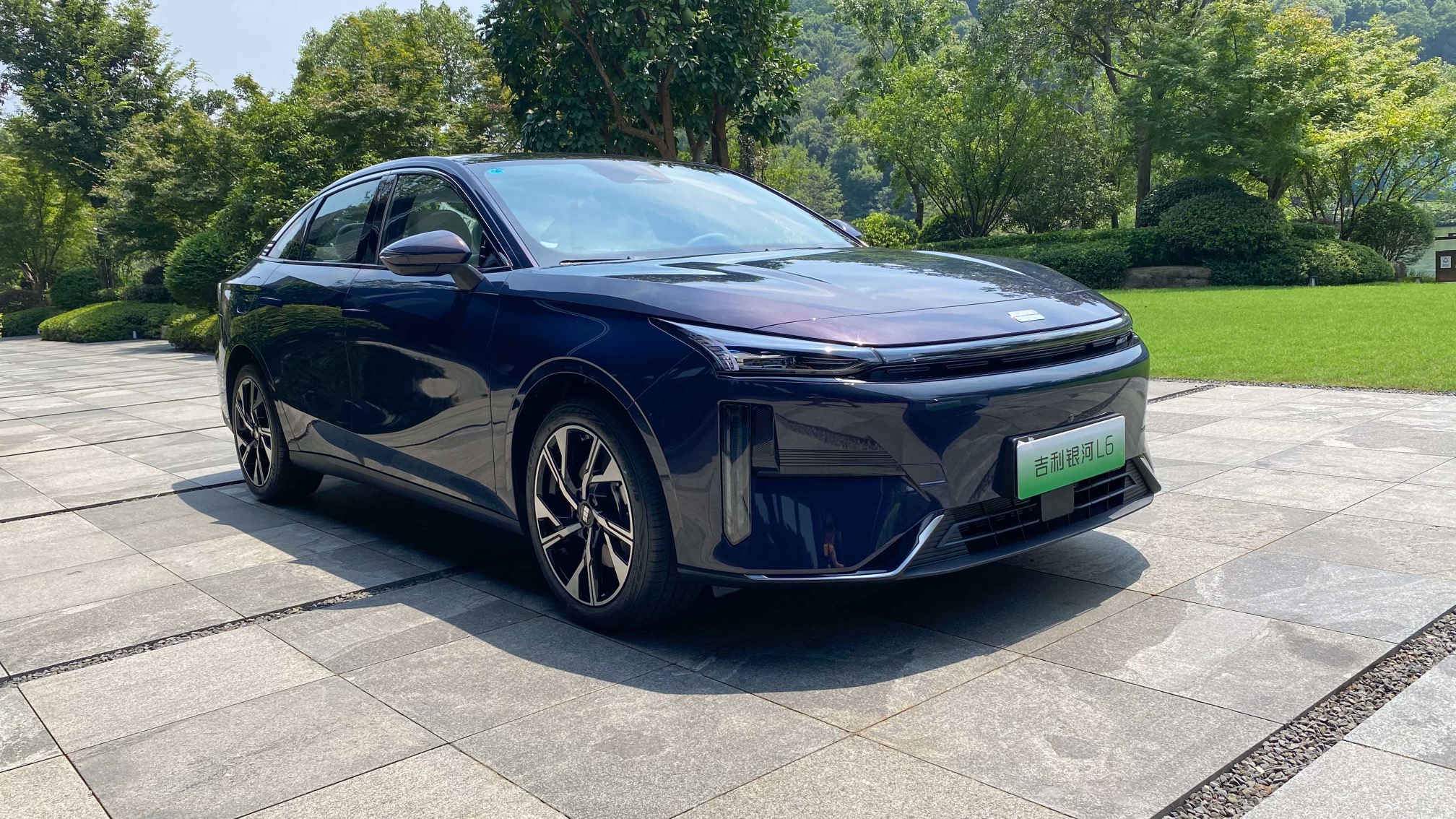
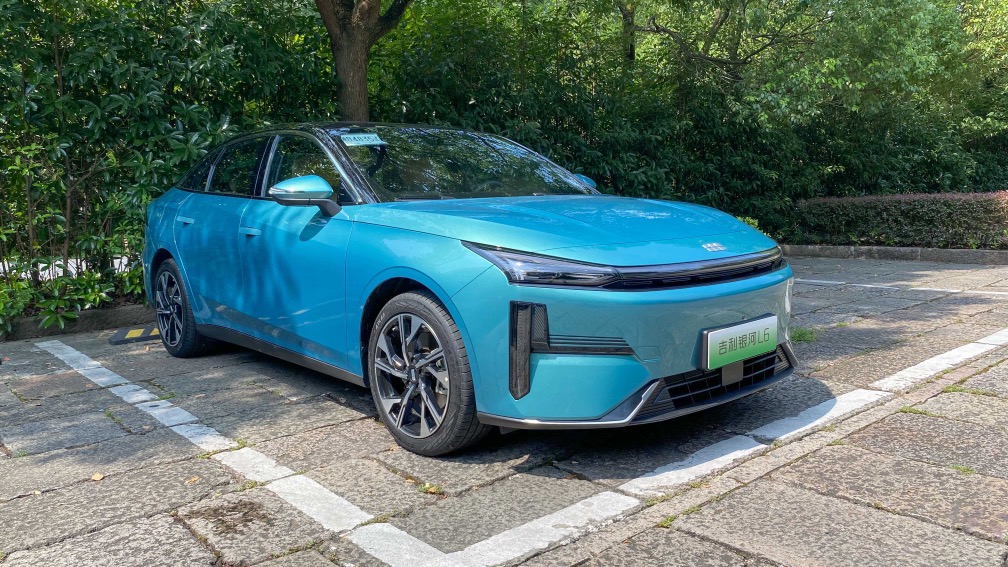
The dimensions of the Geely Galaxy L6 are 4,872 x 1,875 x 1,489 mm with a wheelbase of 2,752 mm. Let’s dive right into the interior to check out the space it offers. I stand at 176 cm, weighing 100 kg. Seated in my comfortable position, I still have an ample legroom of over two fists.
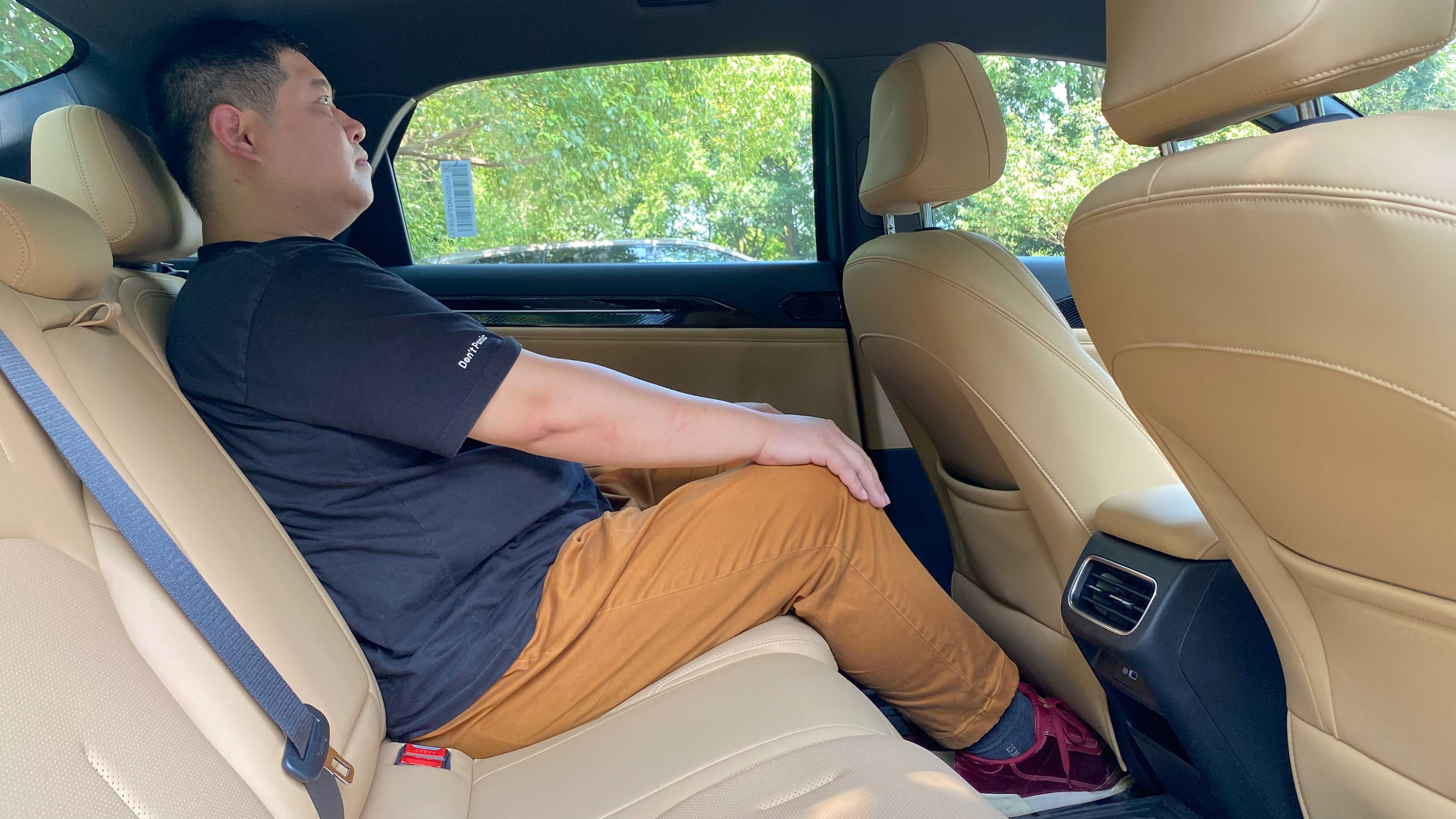
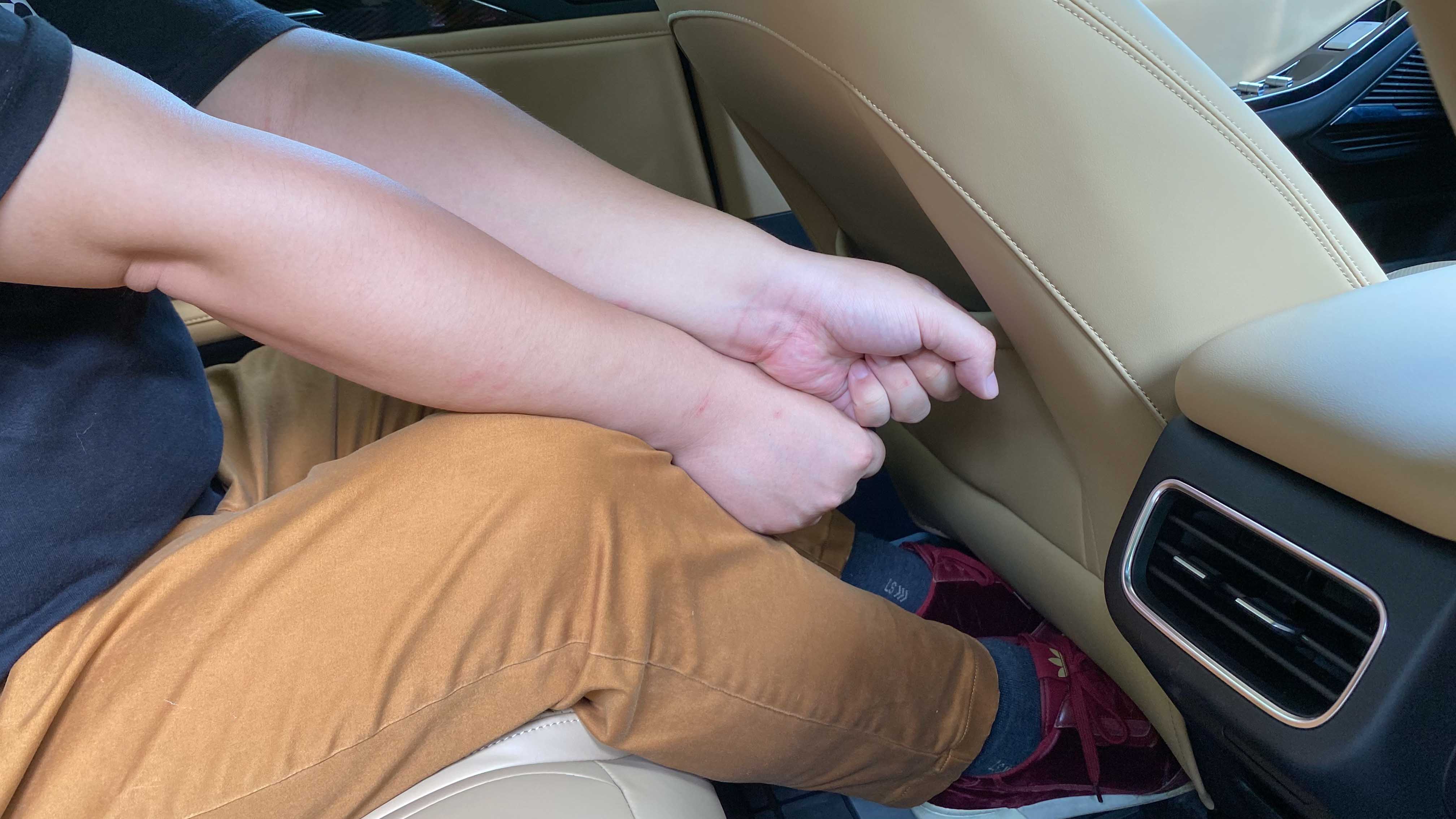 The headroom to the sunroof is about 4 fingers wide. However, if you lean completely on the backrest, the headroom becomes quite limited.
The headroom to the sunroof is about 4 fingers wide. However, if you lean completely on the backrest, the headroom becomes quite limited.
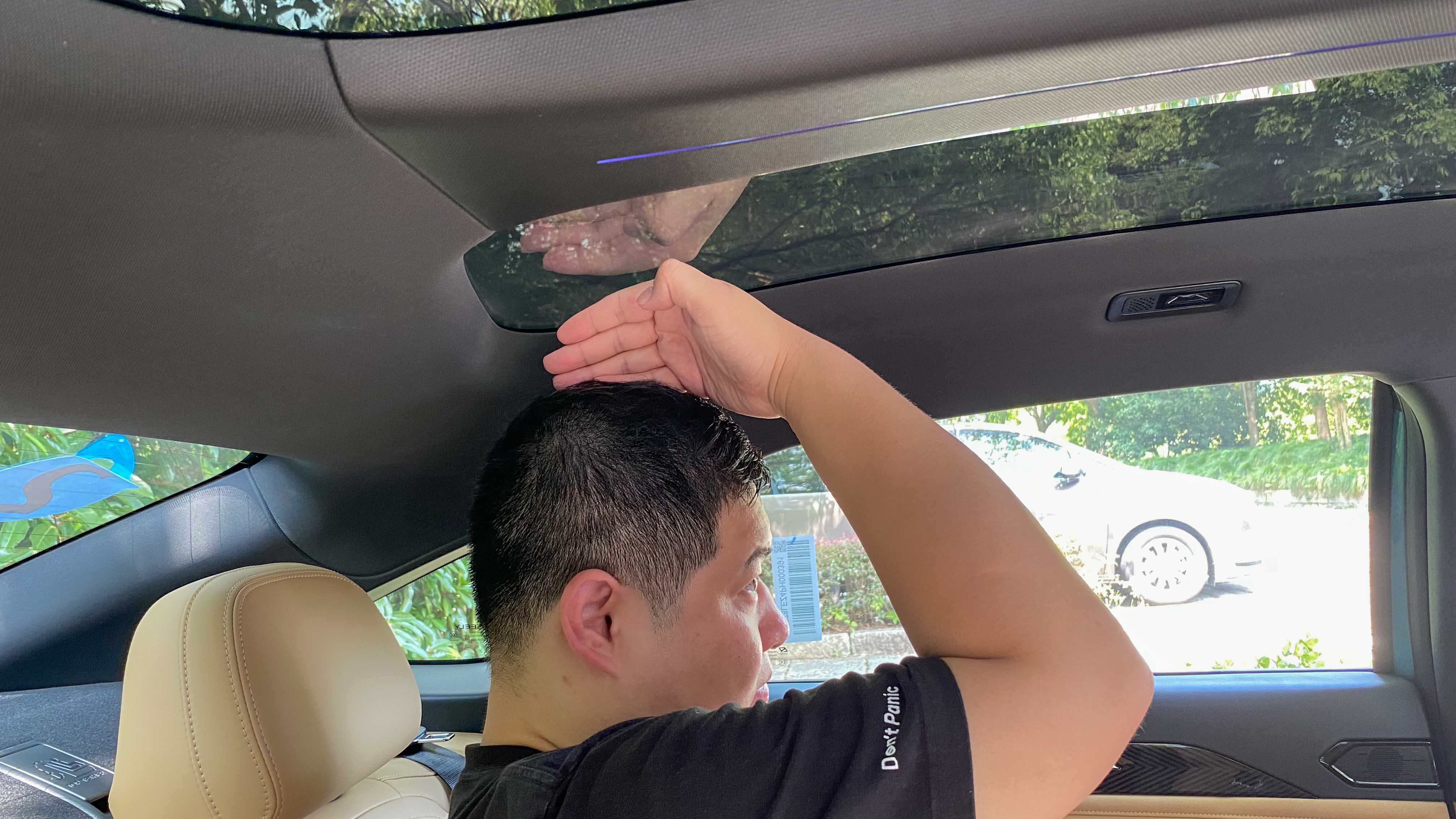
Worth noting is, the backseats of the GEELY L6 are quite soft and the length of the seat cushions is sufficiently long, providing adequate support for the thighs of a person of my height.
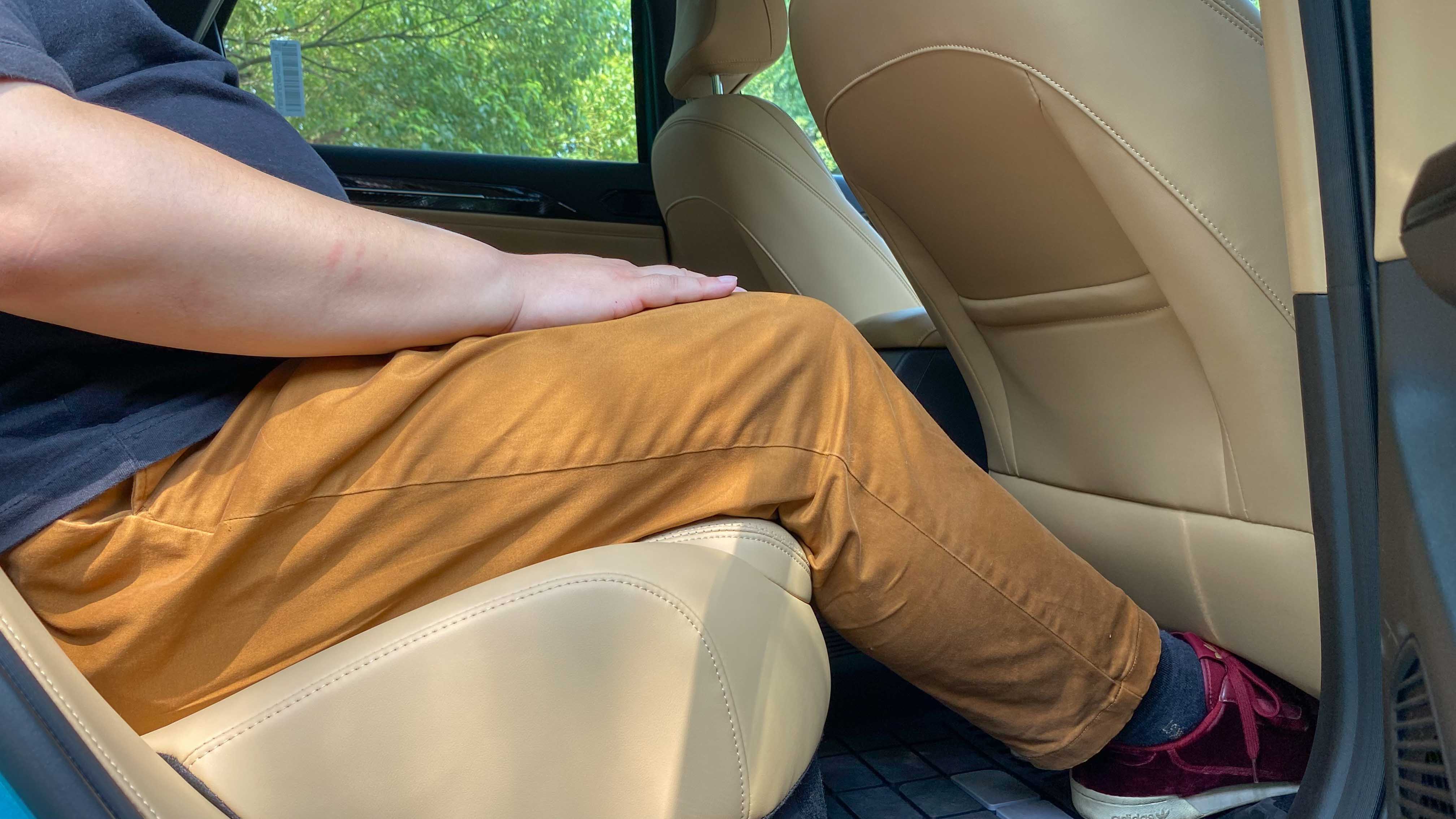
We’ve previously discussed the infotainment system, you can check out ”Generative AI is on board! GEELY L6 cabin first-hand experience” for more information. Now, let’s delve into some other interior highlights.
Interestingly, the GEELY L6 offers an outside voice command function. It utilizes 3 external microphones, located on both side mirrors and the left side of the front, that can recognize voice commands within 1.5-meter range. After trying it out myself, I found that it indeed works flawlessly when managing the air conditioning from outside the car.
You might be wondering if it’s possible for others outside the car to operate the vehicle via this voice-command feature. According to official Geely personnel, this won’t work. In order for the outside voice operation to function, two conditions must be met — the car key must be outside the car, and no one is in the driver’s seat. I tested these scenarios out and the car responded accordingly, thus preventing situations where outsiders might operate the vehicle while the owner is inside waiting.
The car’s map software supports a traffic light countdown feature, but it doesn’t rely on real-time sensing, instead, it gets data from map information, hence, it has a slight delay. Unlike some cars where there is a 1-2 seconds delay after the light turns green, the L6 map will turn green 1 second in advance and emit a prompt sound about 5 seconds before turning green. This certainly avoids being honked at by the car behind for delayed departure, but if you happen to be the first car in front of the stop line, remember to start a little later.

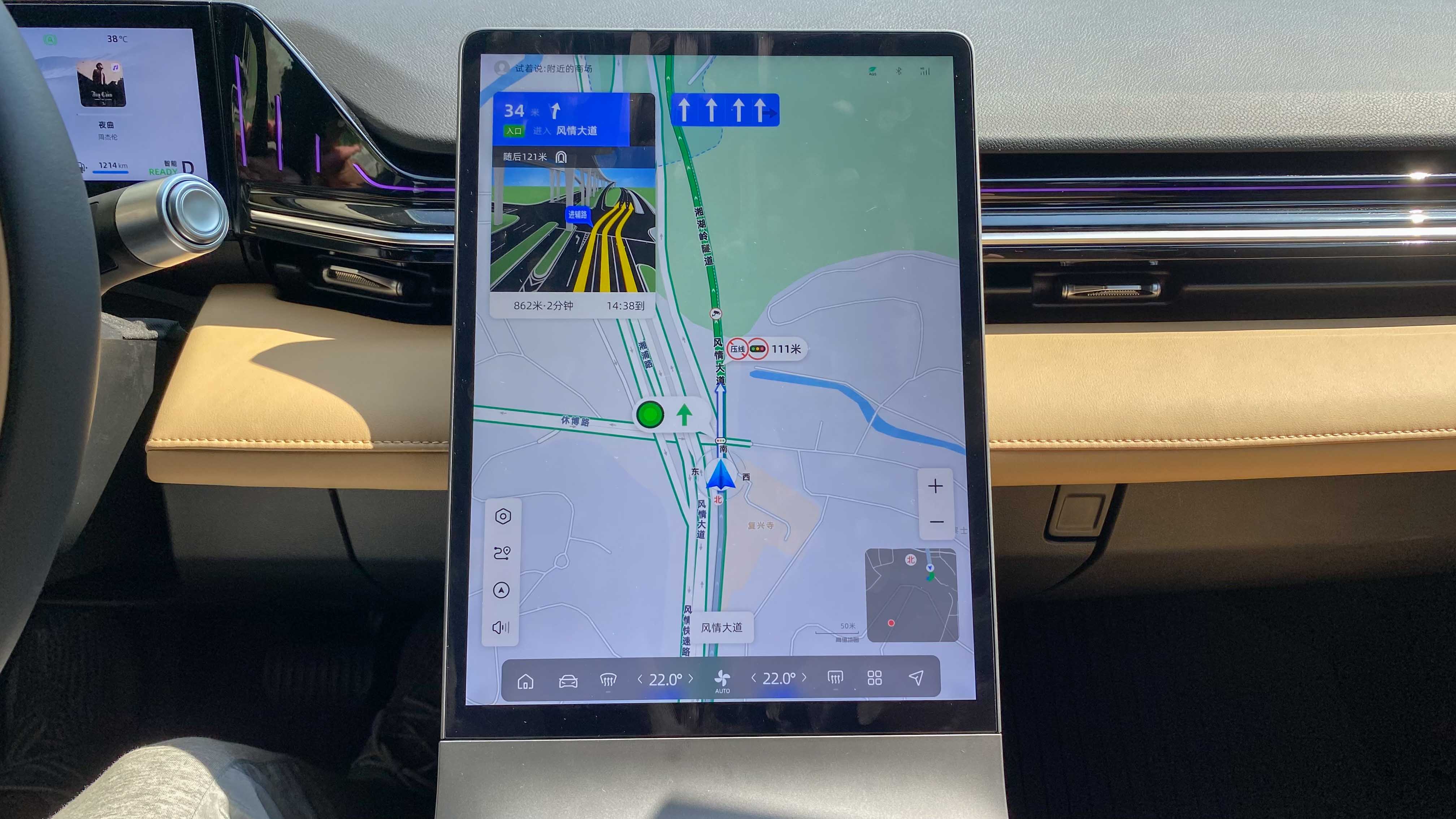
The sun visor is divided into two parts, the upper part is a regular sun visor, while the lower section has tinted lenses similar to sunglasses. The benefit of such a design is to ensure maximum visibility and it’s somewhat handy in case you’ve forgotten to bring sunglasses. Yet it does have a downside – the vanity mirror can only be made so small, which may be a point of contention to ladies who like to apply makeup in the car.The cover in front of the central armrest harbours secrets – normally opened, it reveals a space similar to a glove compartment, large enough to hold a small bottle of mineral water.
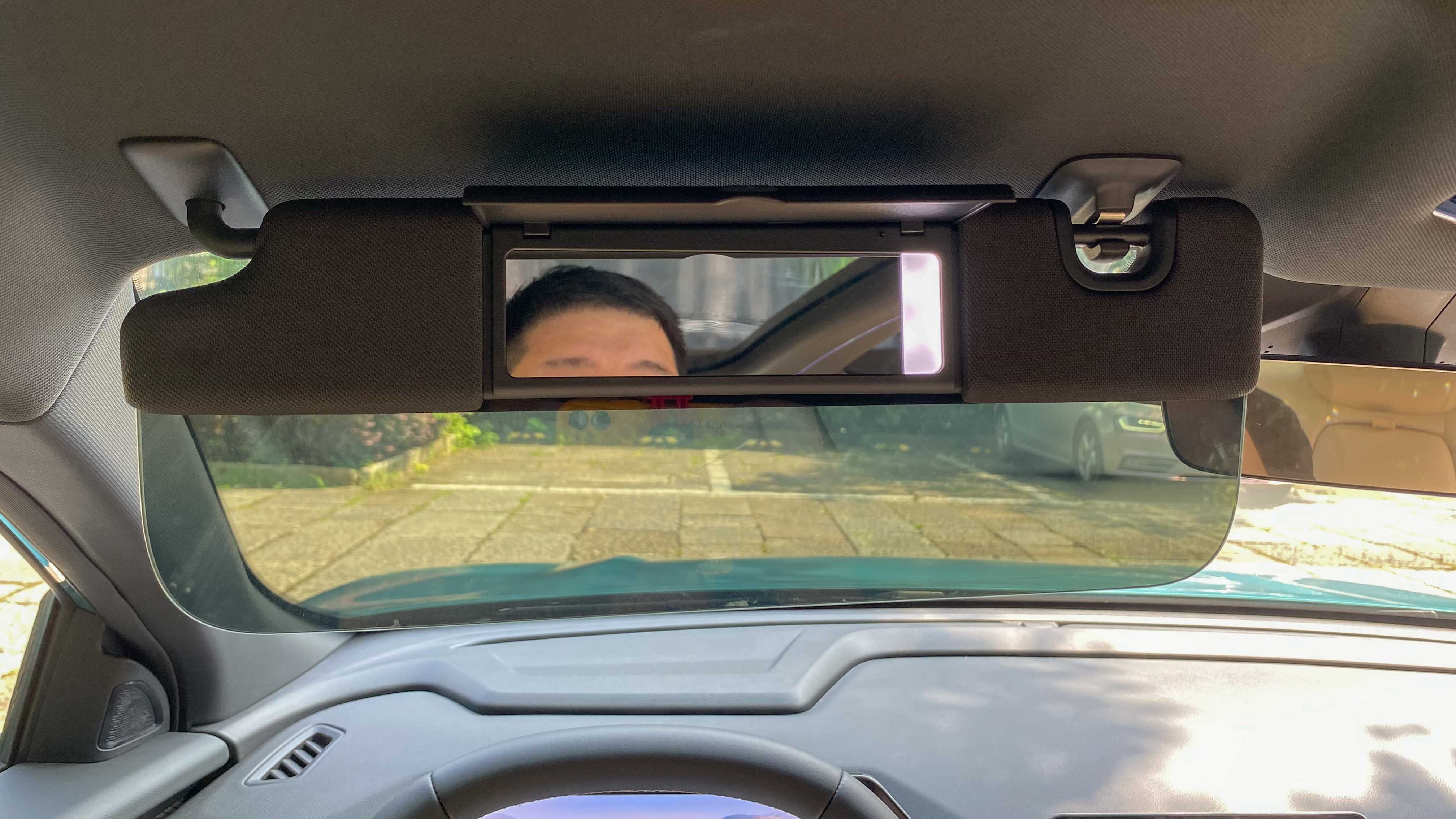
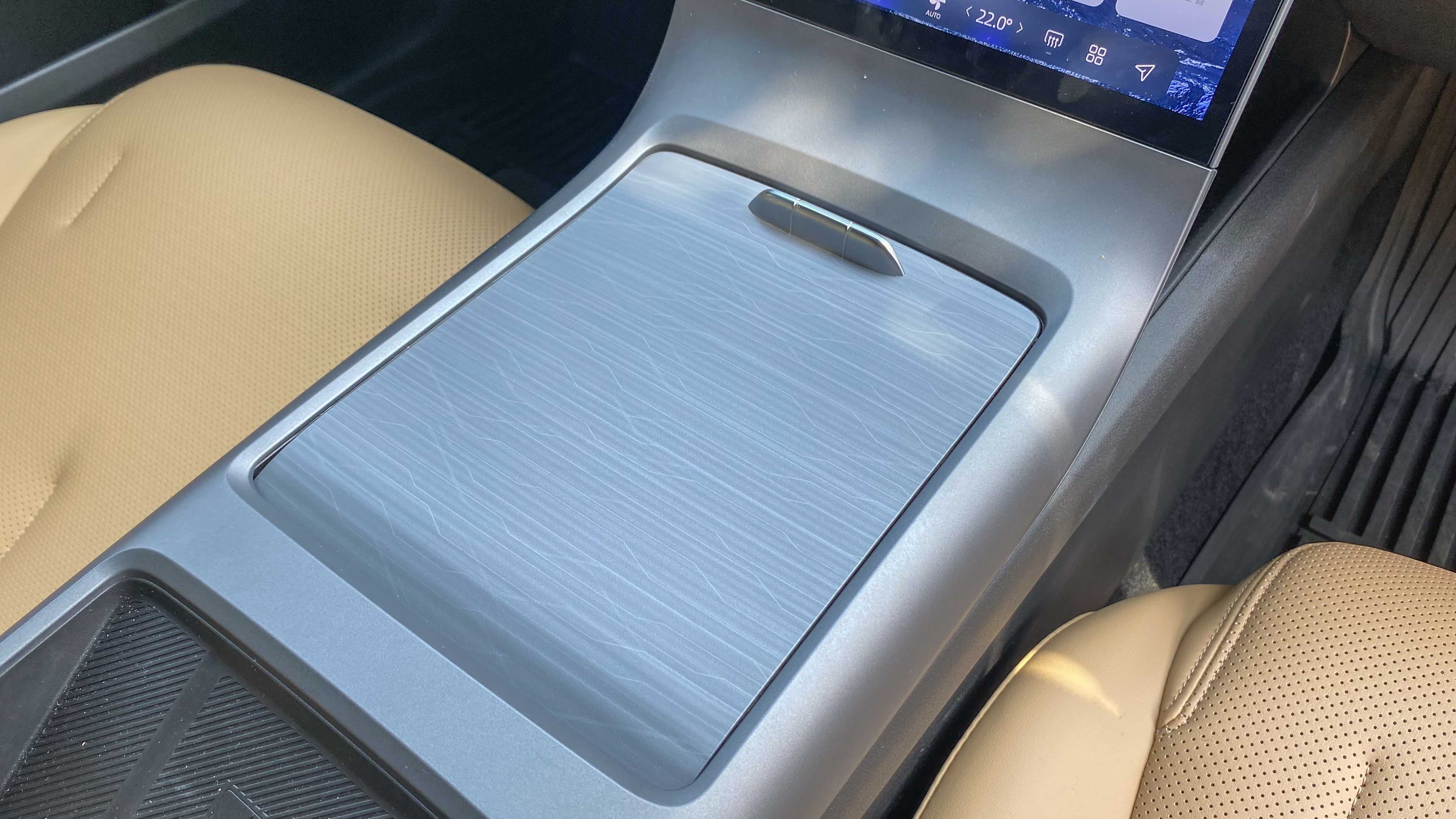
Yet, it conceals an additional layer. With a simple press, two cup holders and some compartments for small sundry items pop out.
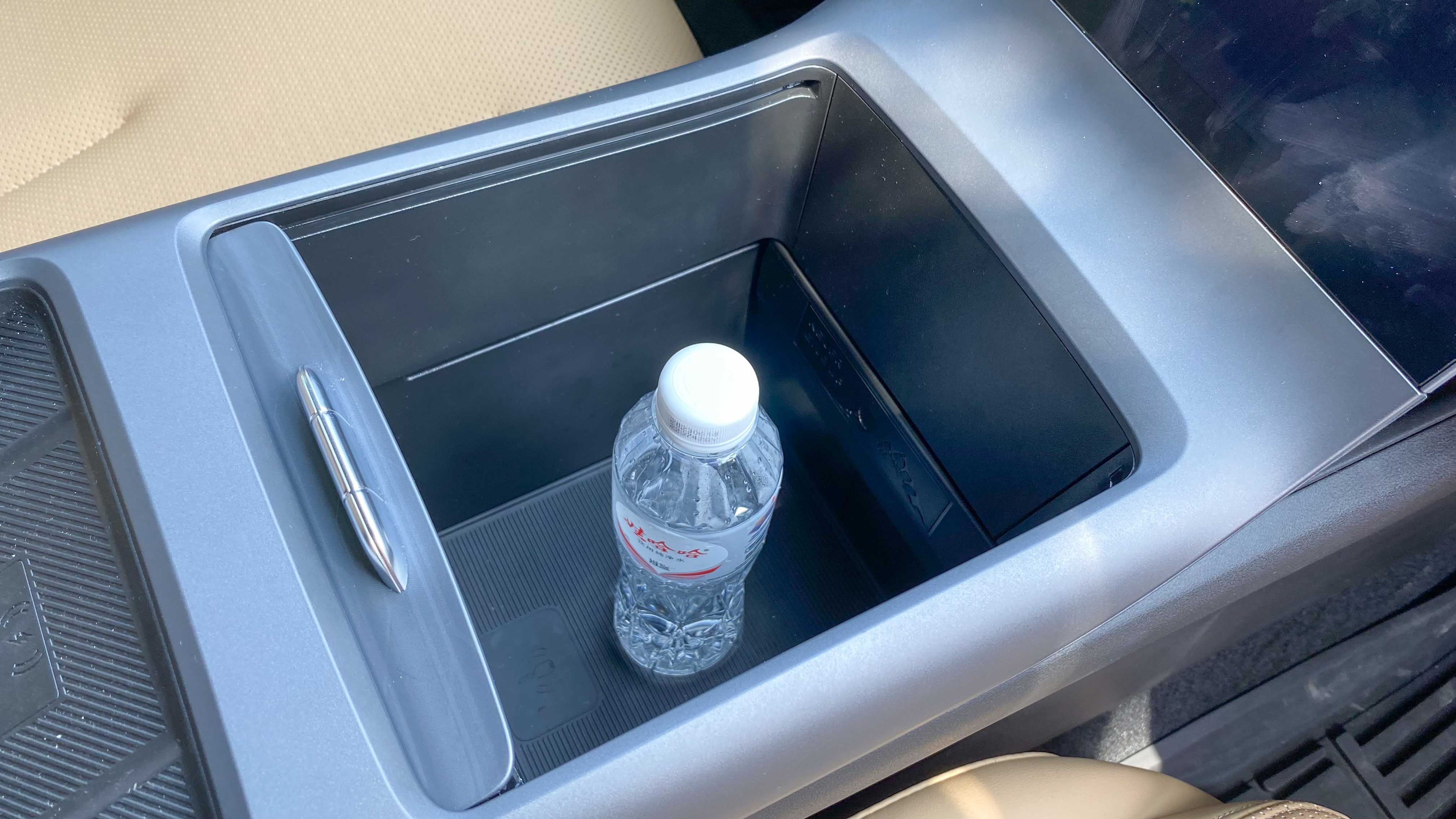
Behind the central control screen lies a small open area. Some vehicles turn this into a wireless charging zone, making it inconvenient to retrieve the phone. But the GEELY L6 chose differently, using this merely as a standard storage area, perfect for stashing items like tissues or wet wipes.
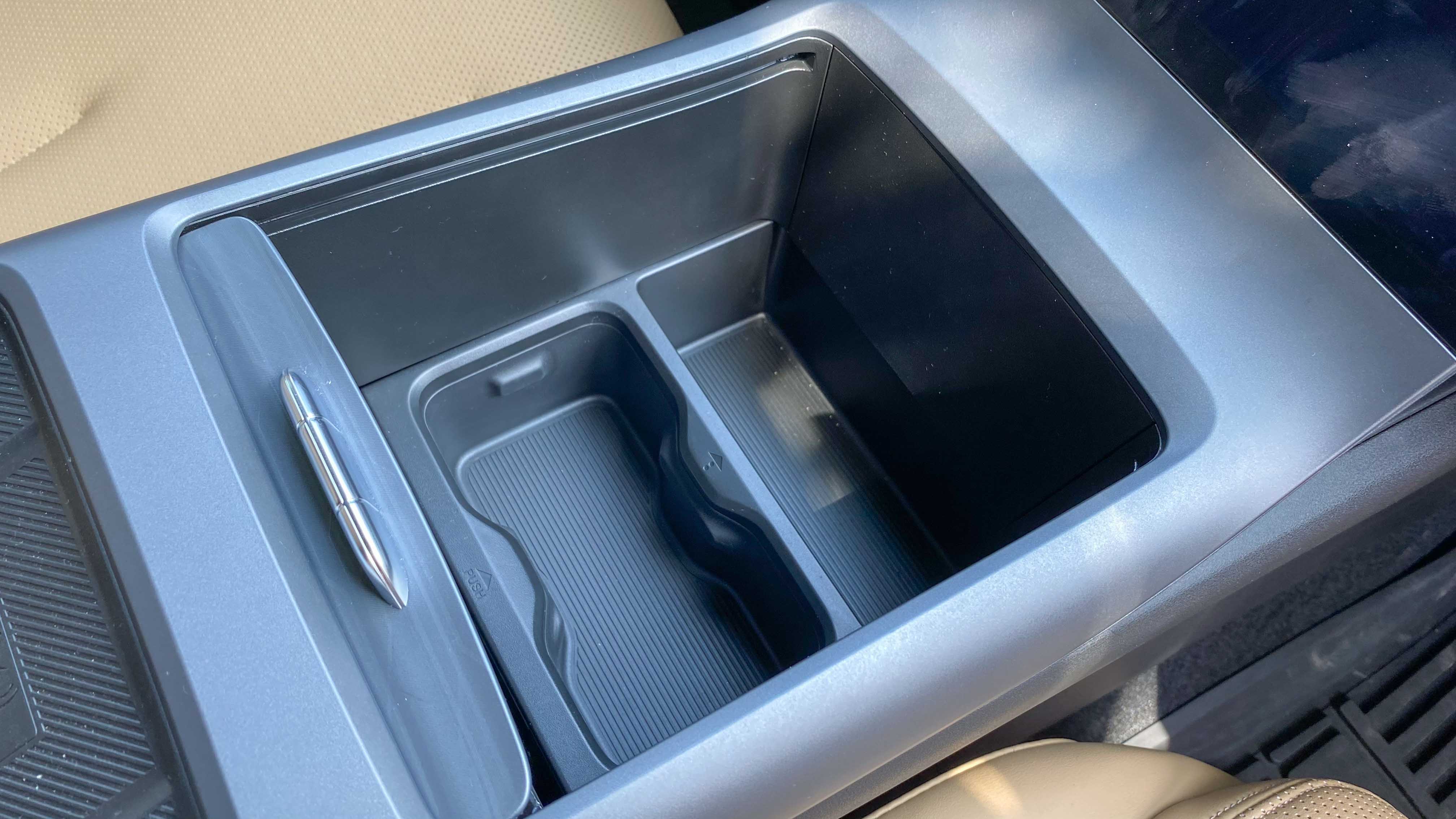
The actual spot for wireless charging sits at the front of the armrest box, featuring a heat dissipation vent. Given the current summer season, a wireless charger without a cooling vent can easily stop charging due to phone overheating. Hence, having these vents not only solves the problem, but also propels the wireless charging power of the vehicle to 50W.
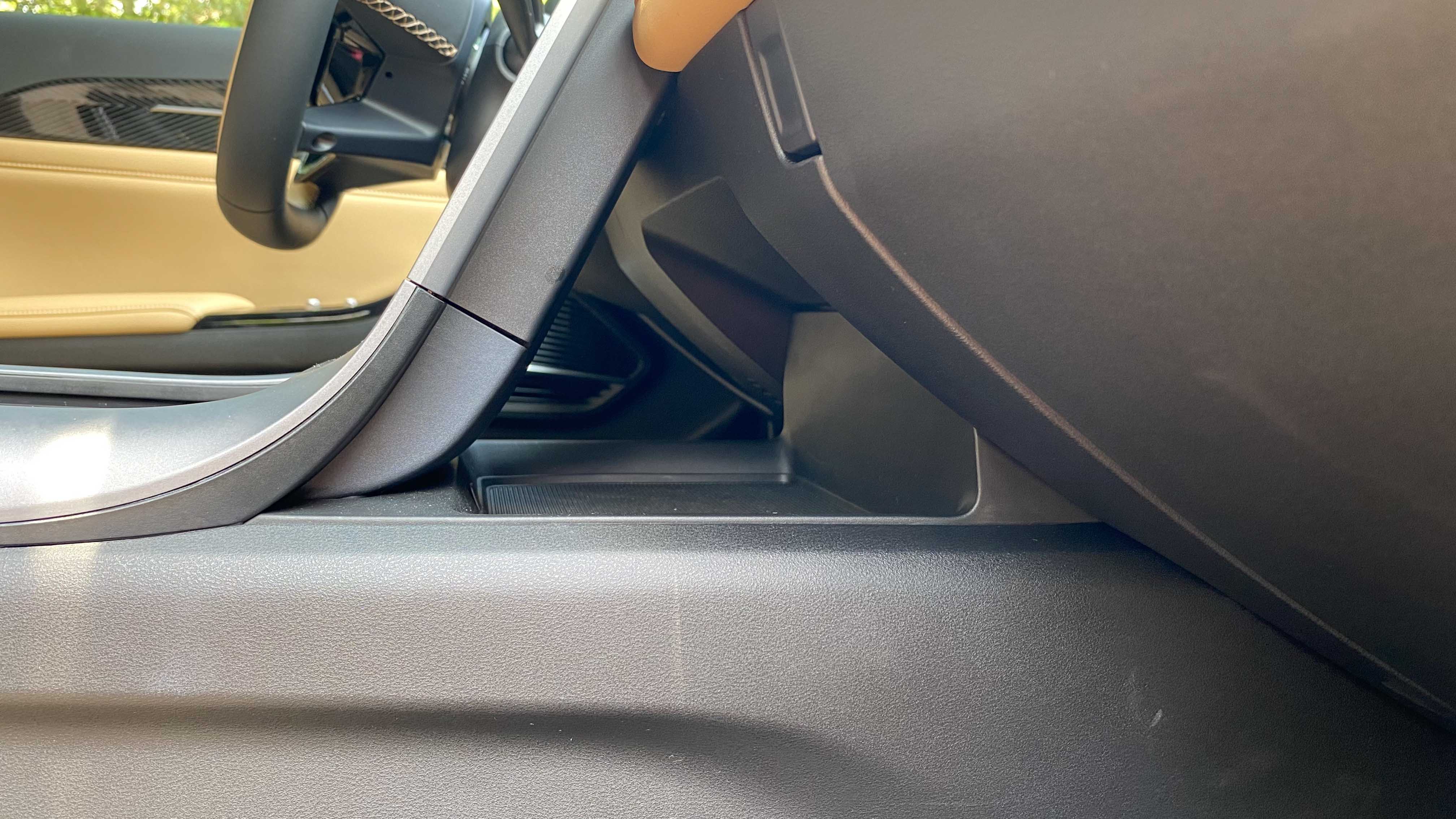
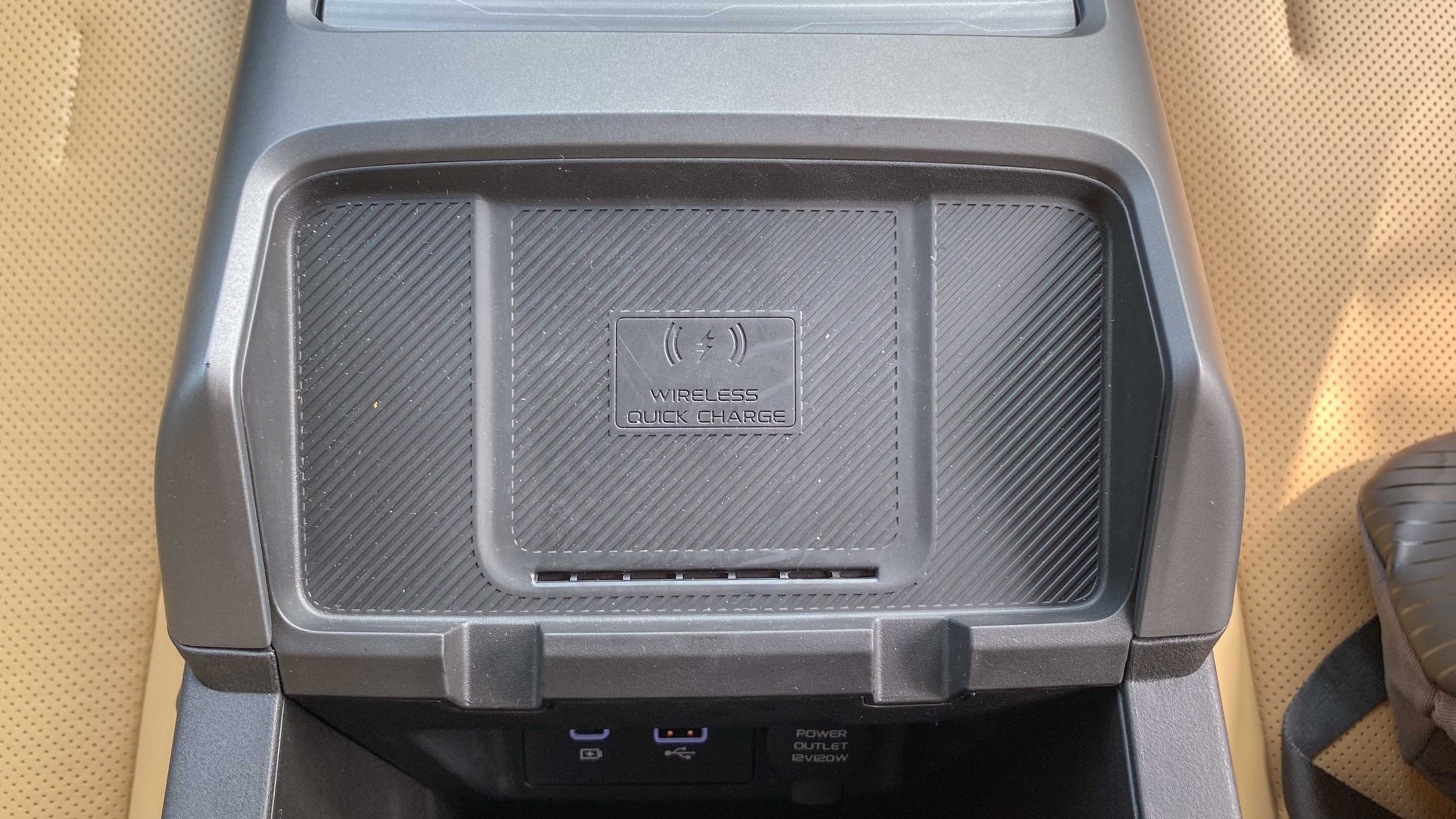
The depth of the armrest box matches that of the storage space mentioned before, again, large enough for a small water bottle. The box also houses the Type-C charging port, a Type-A data port and the vehicle’s fast charging port.
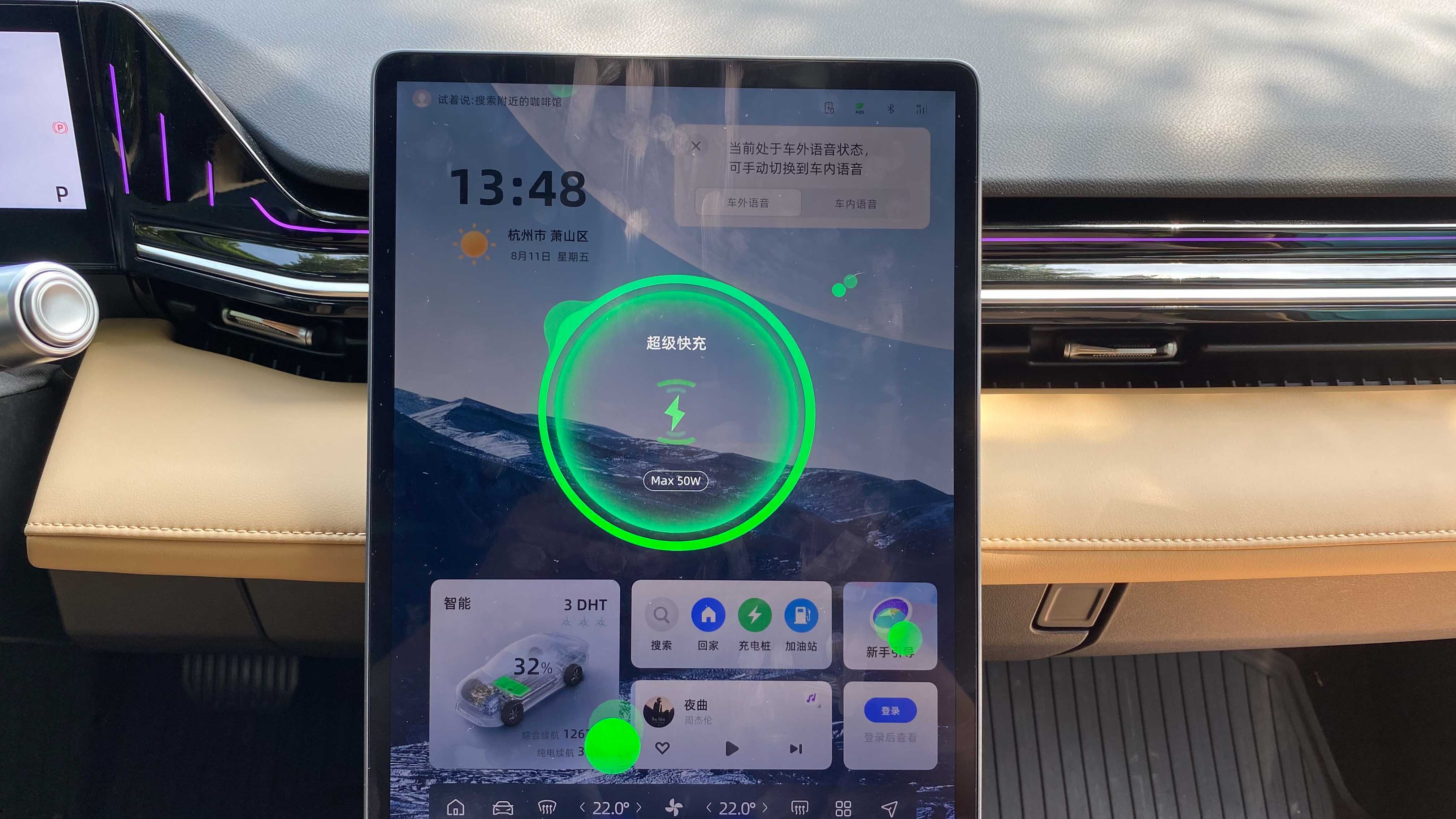
The storage space in the doors of the GEELY L6 is notably vast. Even five small bottles of water, the sole number available in the vehicle, cannot fill up the storage area. However, they fit pretty well into the storage space on the rear doors.
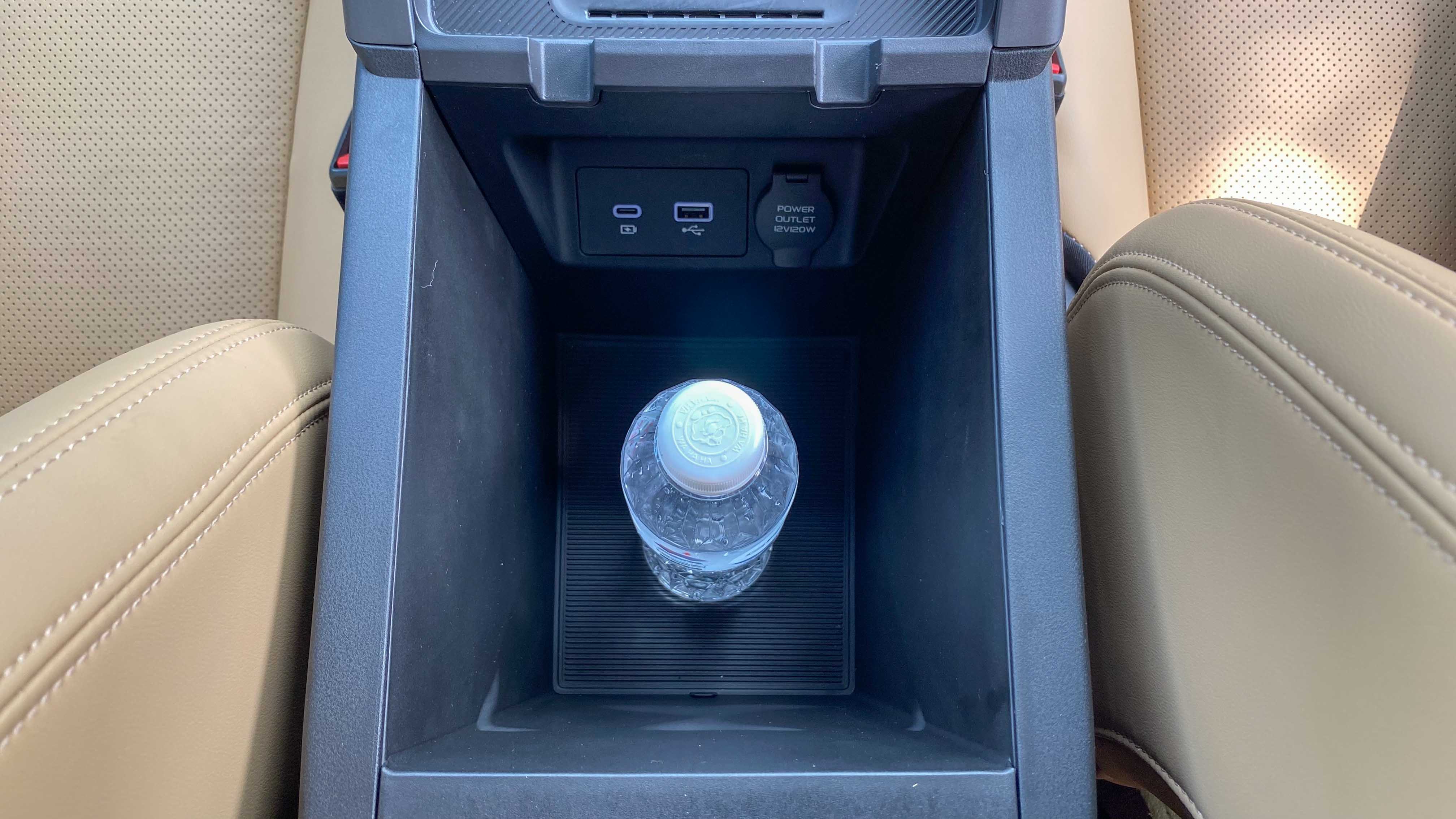
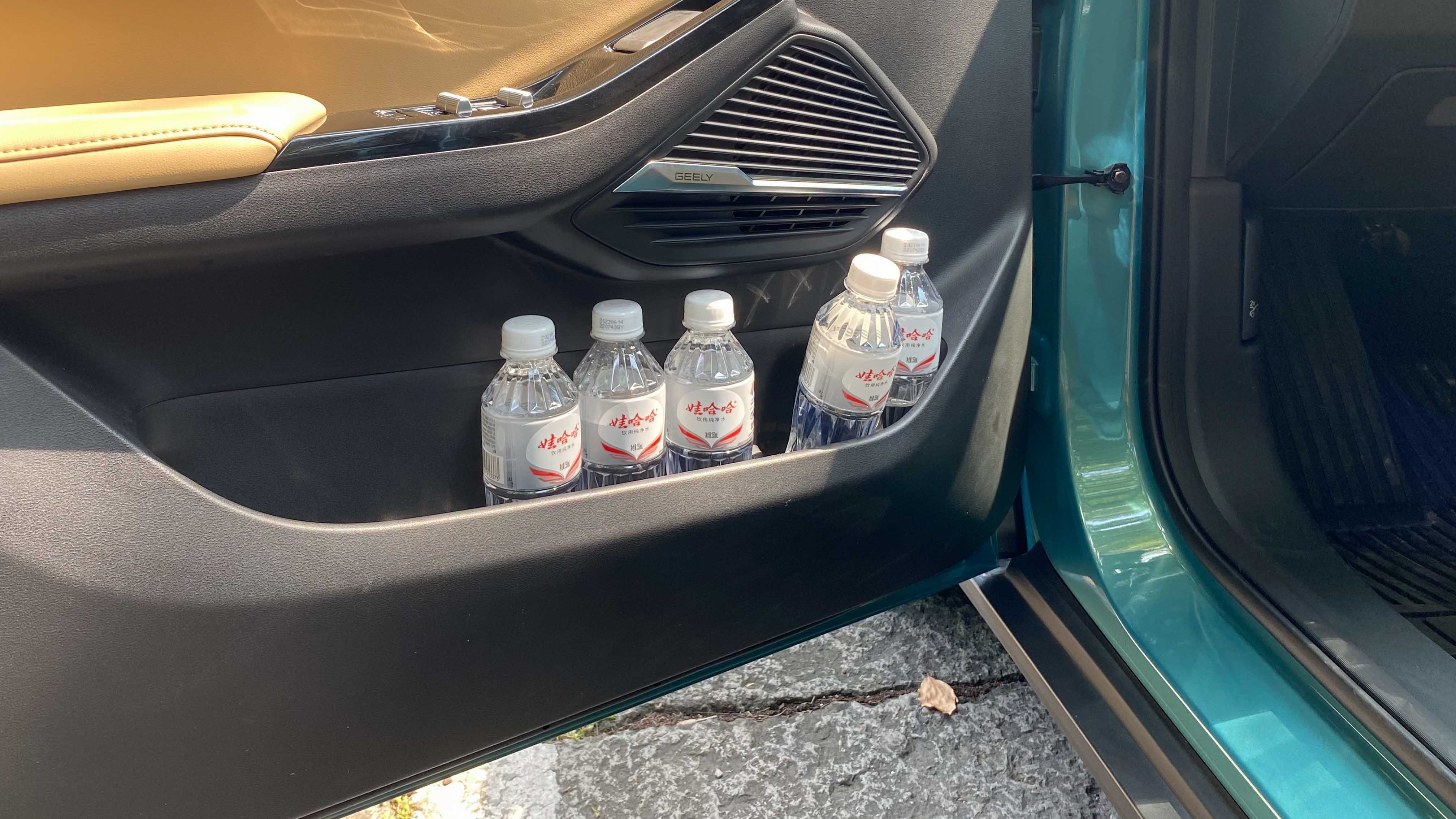
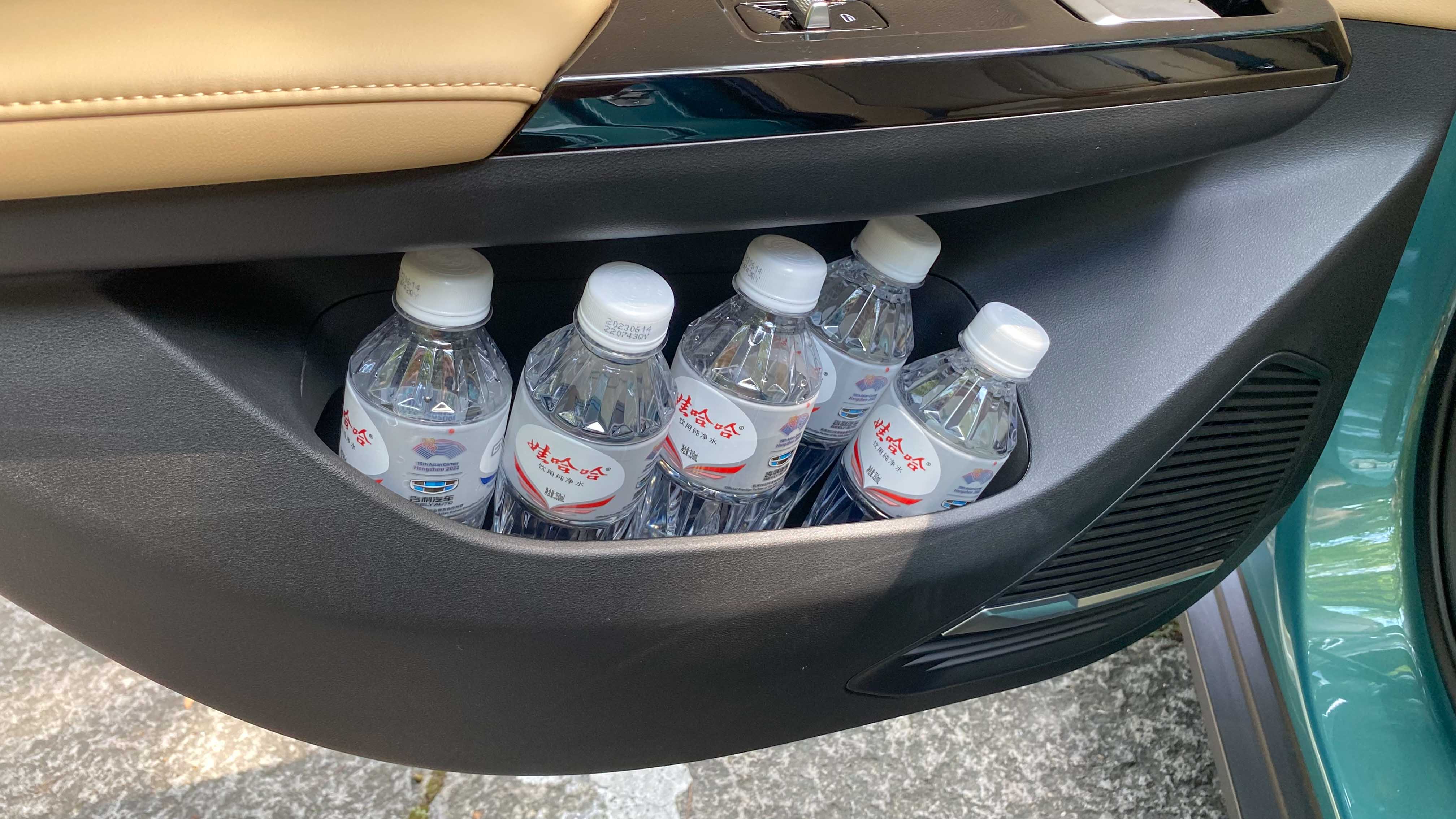 The glass canopy is not a common single piece of glass or two pieces at the front and back. Instead, it is divided into two pieces on the left and right, with an ambiance light strip on the vertical beam in the middle. If you need to install additional sun blinds, make sure to check carefully as the shape of the single piece of glass is asymmetrical.
The glass canopy is not a common single piece of glass or two pieces at the front and back. Instead, it is divided into two pieces on the left and right, with an ambiance light strip on the vertical beam in the middle. If you need to install additional sun blinds, make sure to check carefully as the shape of the single piece of glass is asymmetrical.
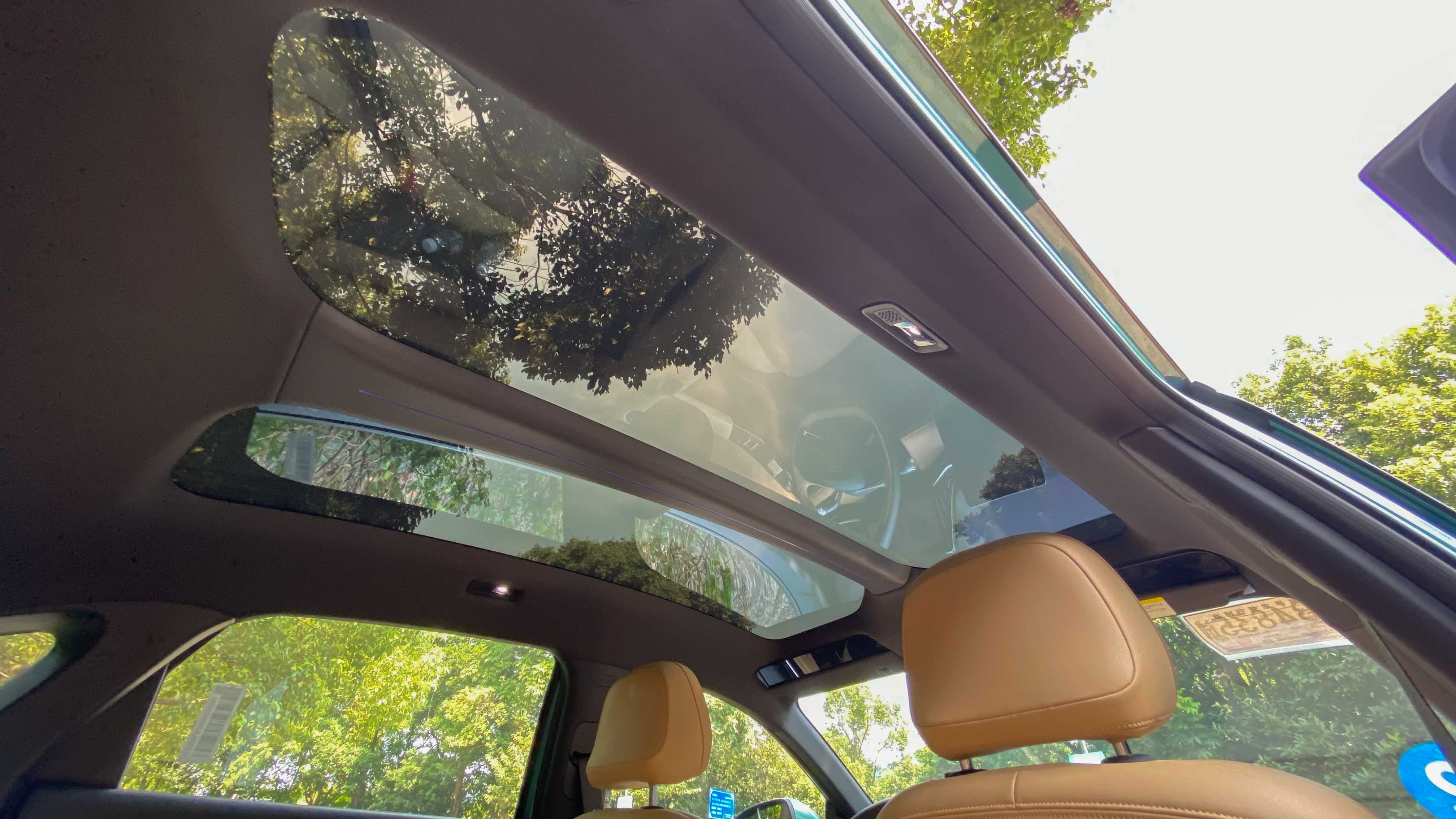
There are no grab handles on the roof of the car. If the driver is driving aggressively and you happen to be in the car, please make sure to hold onto anything you can.
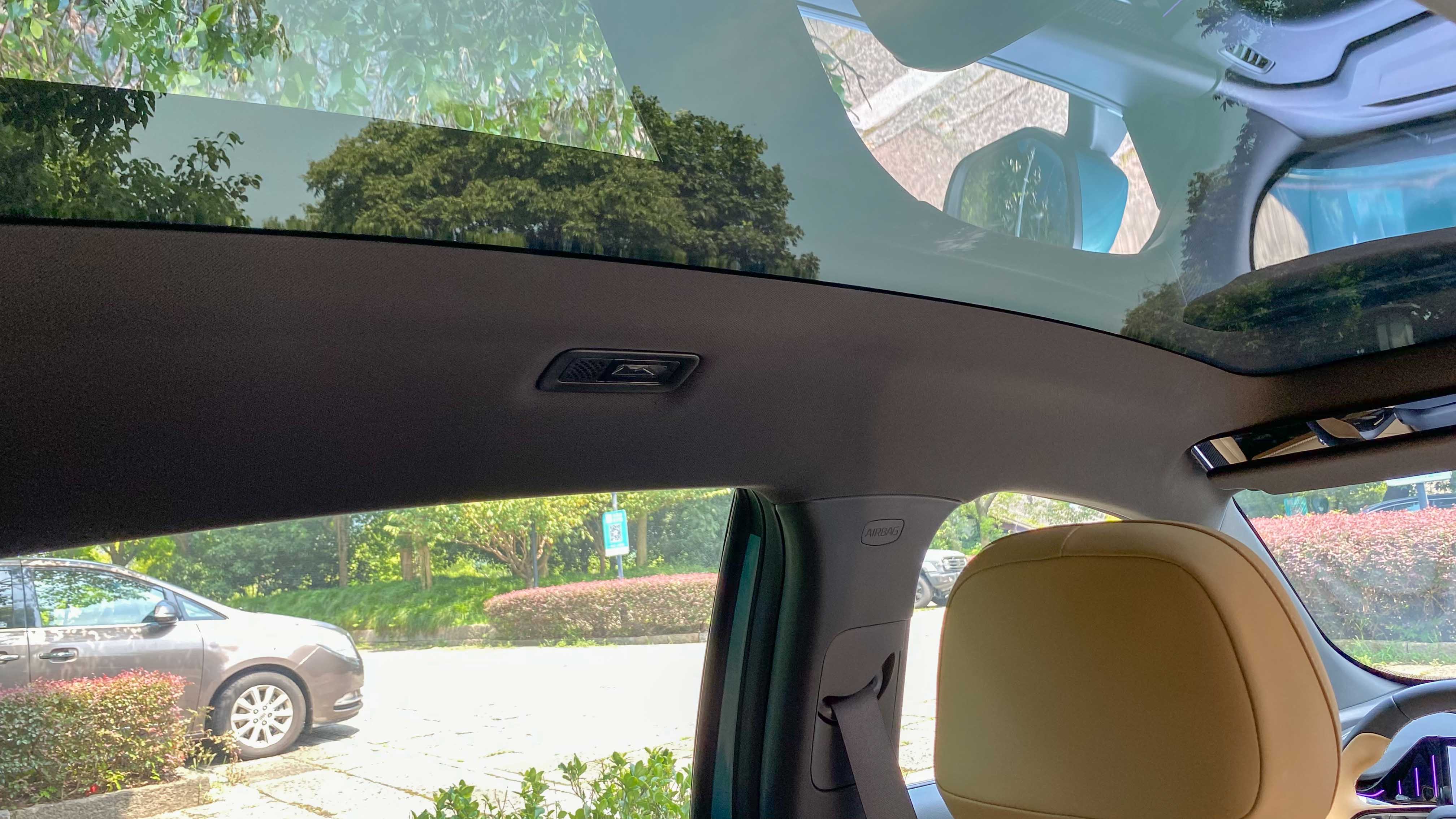
At the end of the central armrest, there are two air vents and a charging type A port. The storage space below can barely fit two cell phones.
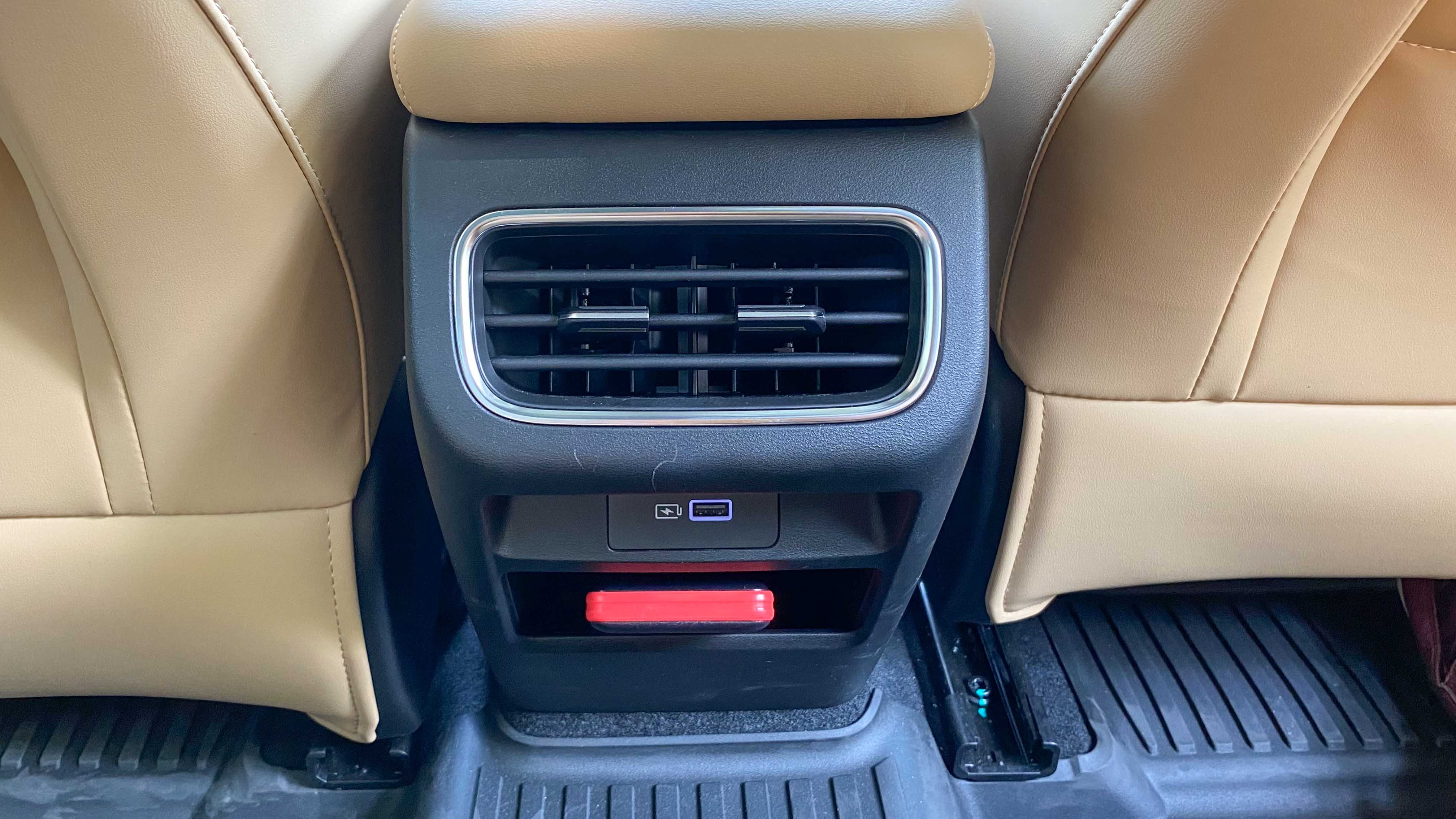
Final Thoughts
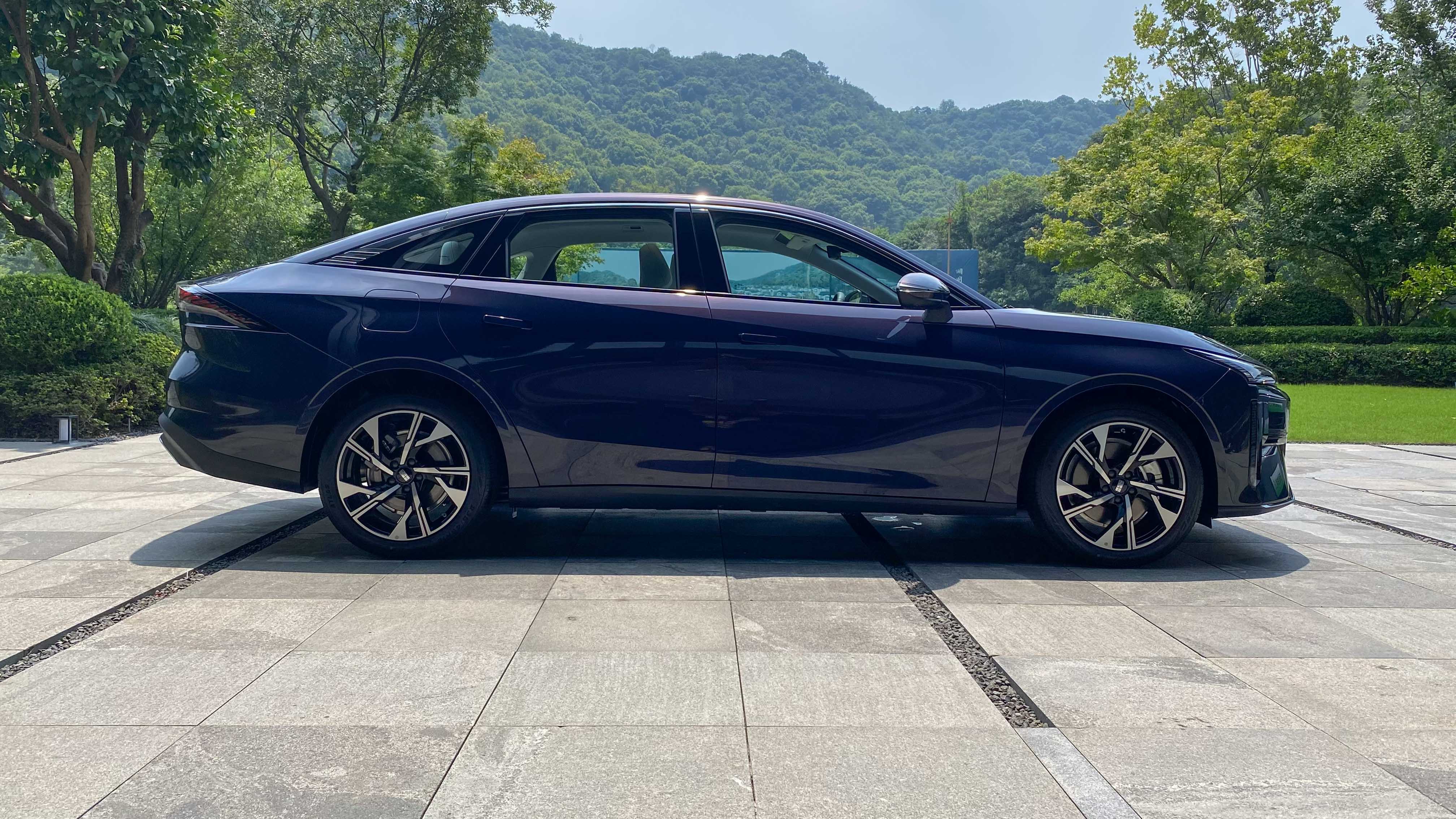
Previously, I test drove the previous version of the Galaxy L6 in a test field in Shandong Zhaoyuan. I had a certain understanding of the driving experience and performance limits of this car. But re-test driving it in Hangzhou gave me a different experience.
With precise steering feel, impressive performance in hybrid models, a sport-oriented suspension performance, and easy-to-adjust pedals, I can say that the Galaxy L6 is indeed among the top of the front-wheel drive sedans I drove within 200,000 RMB.
Add to this a stable performance in assisted driving at the same price range and a satisfactory in-car experience. The overall performance of the L6 has formidable competitiveness among same-price family sedans. Although it is still in the stage of prototyping, compared to the last test drive, it is getting closer and closer to the final mass production version.
Although the final price is still unknown, based on the official competitive models, the price of the Galaxy L6 may be in the range of 140,000-180,000 RMB. So what do you think the final price of the Galaxy L6 will be?
This article is a translation by ChatGPT of a Chinese report from 42HOW. If you have any questions about it, please email bd@42how.com.
